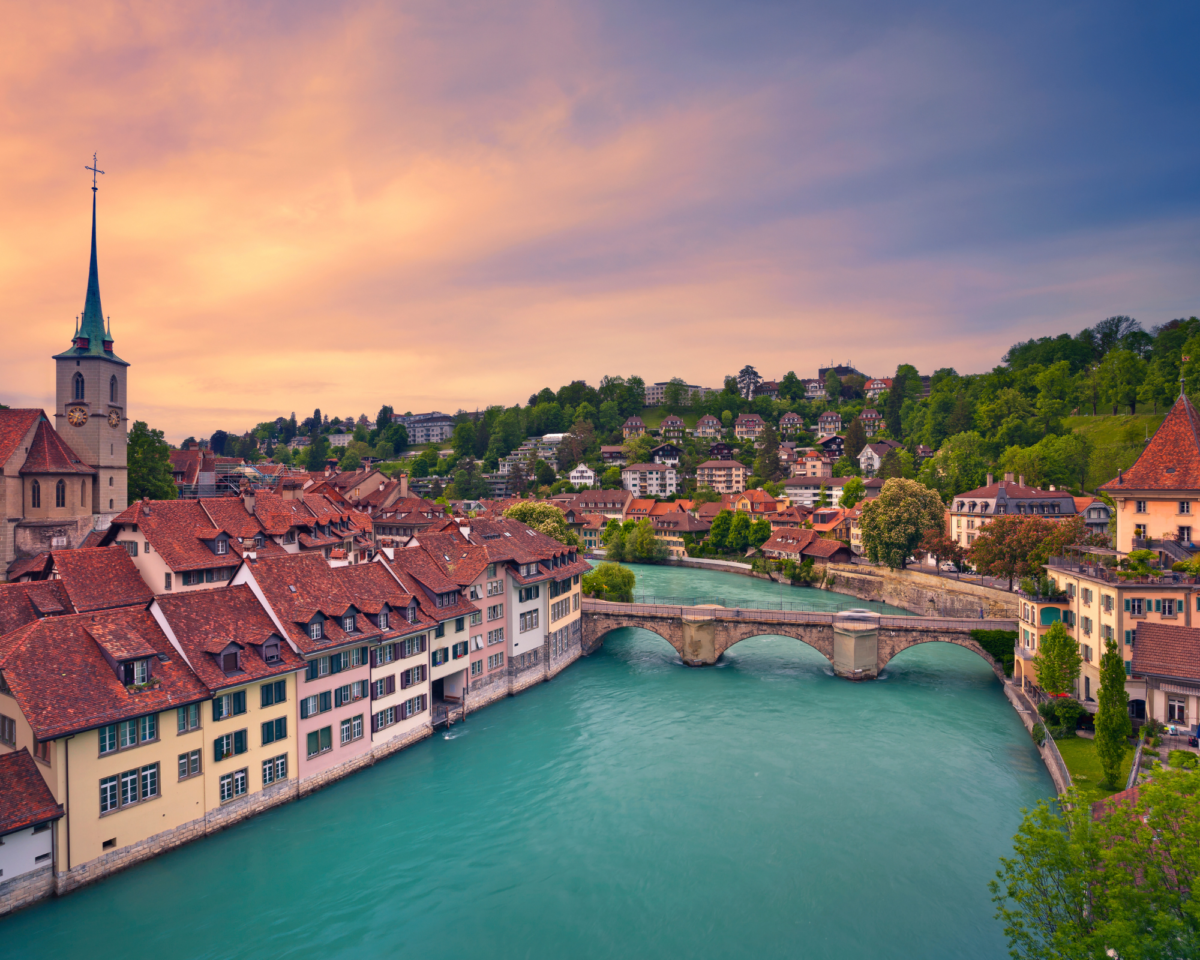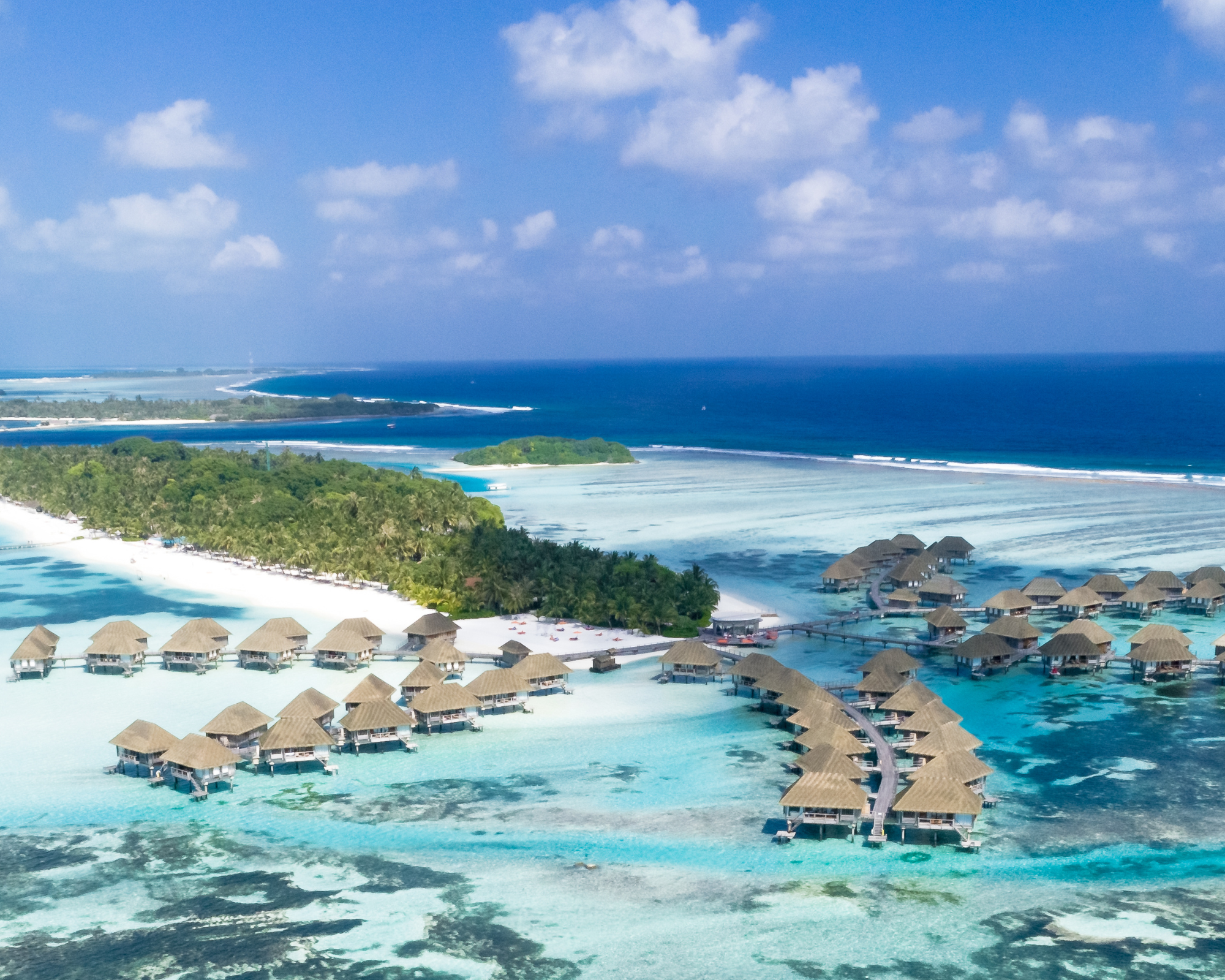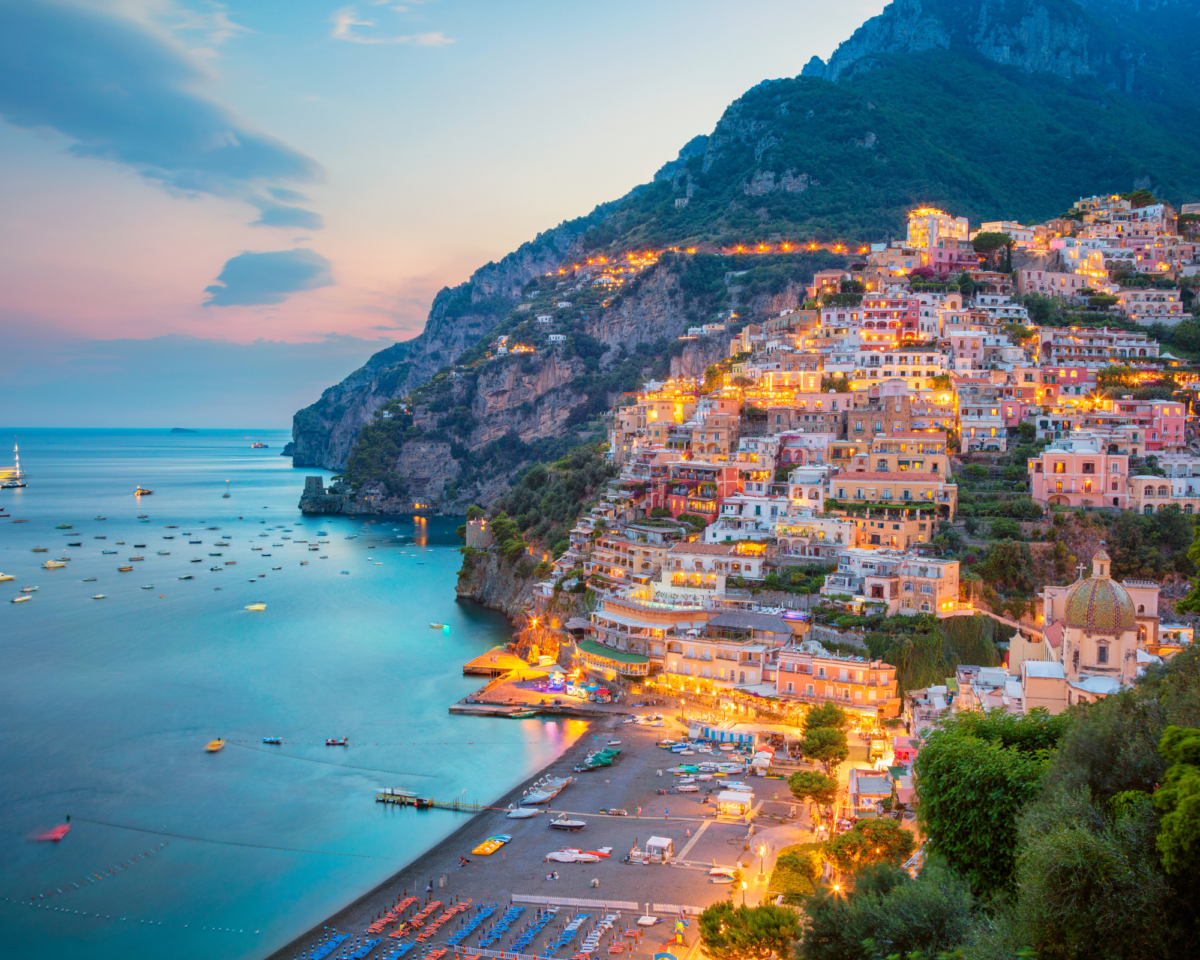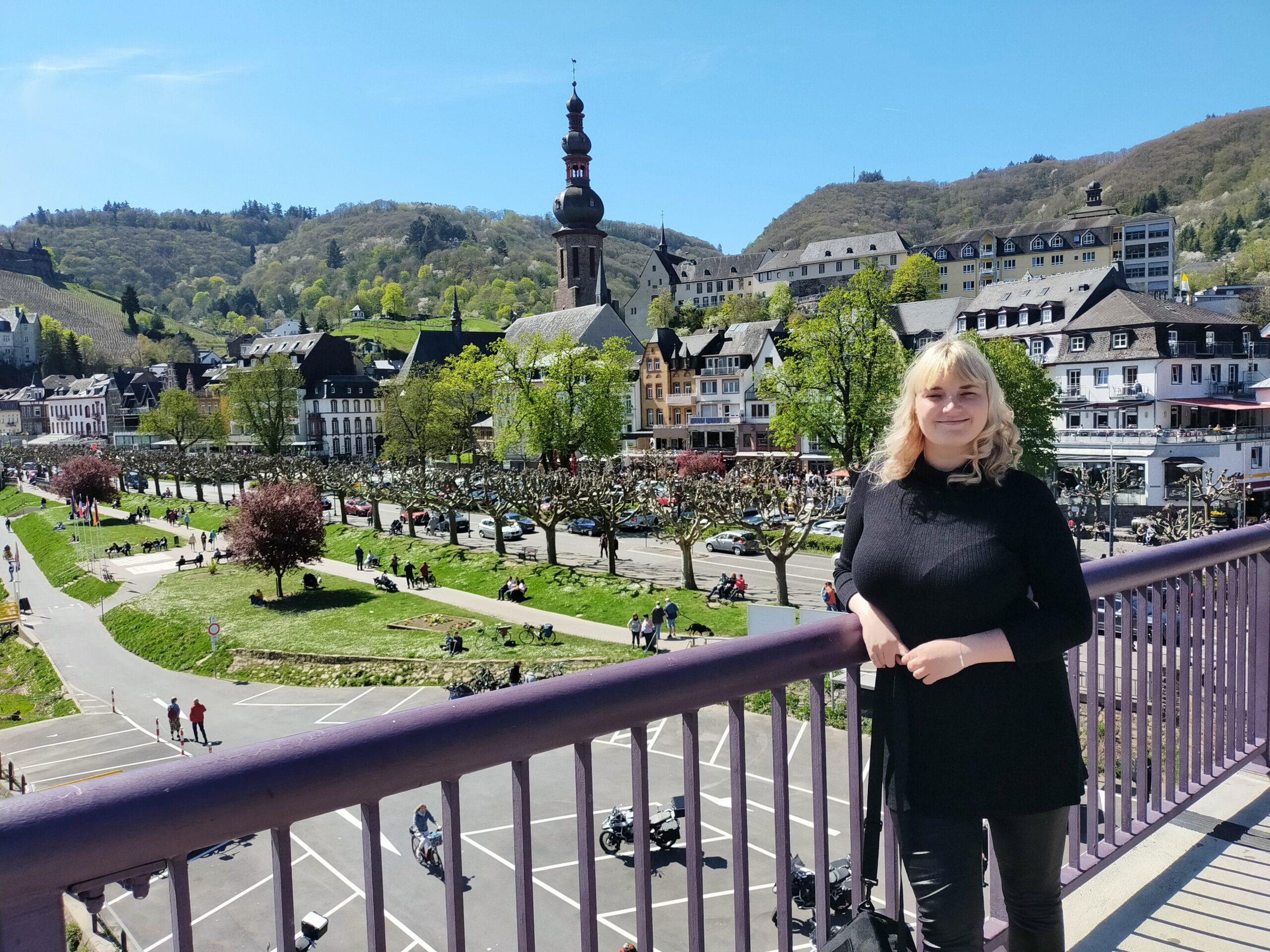
The Best 36 Enchanting villages to visit in Germany(village pizza ideas)
The Best 36 Enchanting villages to visit in Germany(village pizza ideas)
It has already been 11 years since we lived in Munich, Germany. So far we have already managed to visit a large part of this wonderful country – we have seen beautiful lakes and waterfalls, but also the cities with the main attractions. Apart from this general article about Germany, we also wrote about every city, lake and small towns we visited and German restaurant ideas. If you want to know more about these beautiful places, we invite you to read the other articles about Germany.
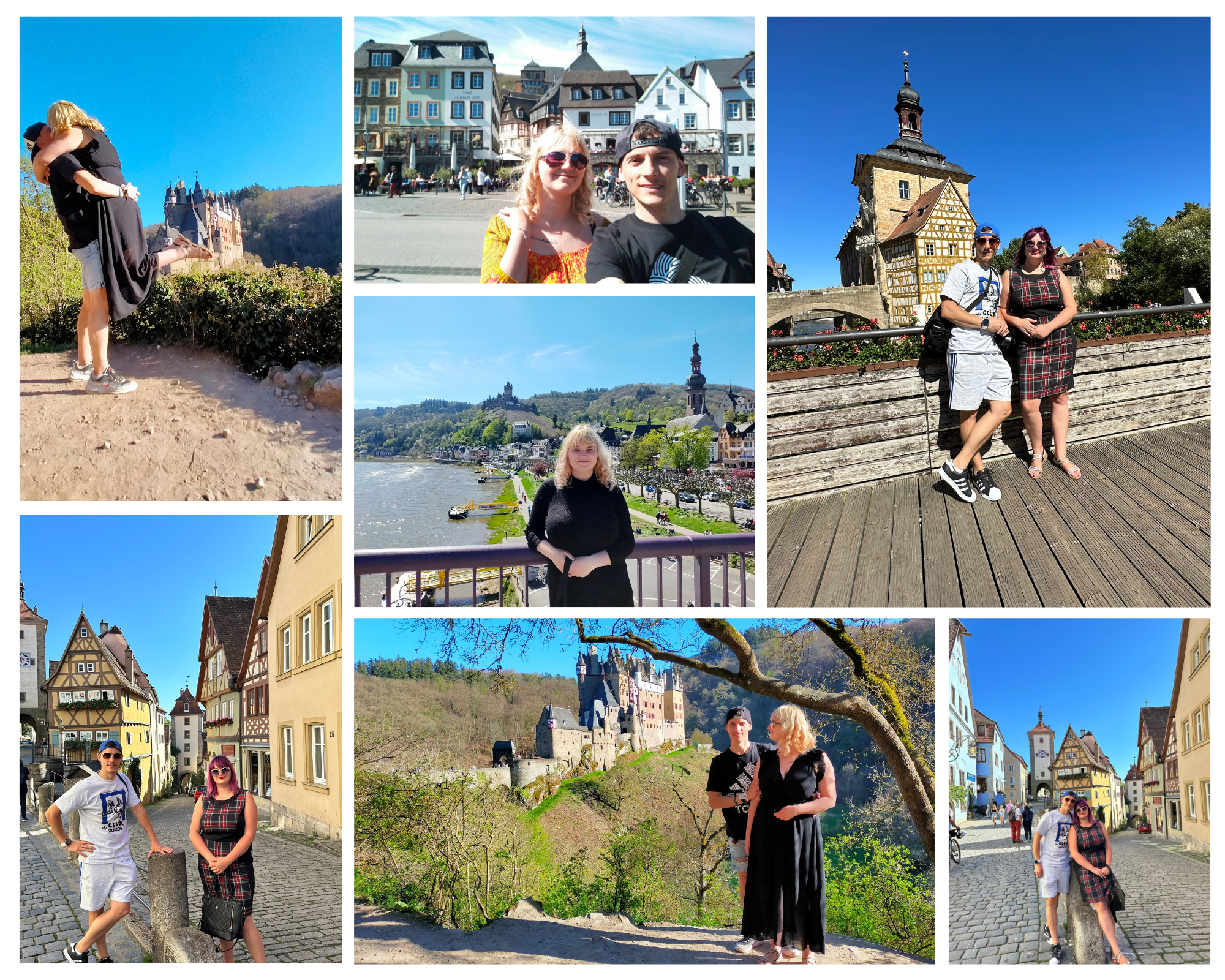
Table of Contents
Germany Map
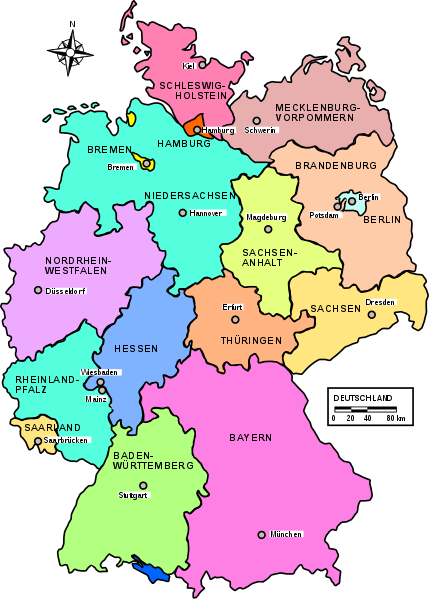
Informations
Its capital and largest city is Berlin, and its financial center is Frankfurt; the largest urban area is the Ruhr. Germany is a great power with a strong economy; it has the largest economy in Europe, the fourth largest economy in the world. As a global leader in several industrial, scientific and technological sectors, it is both the third largest exporter and importer of goods in the world. As a developed country, it offers social security and a universal system of health care, environmental protection and free university education.
Temperature: Summer is the perfect time to visit the country in terms of the weather. The sky is clear and everybody heads outdoors to enjoy the sun.
Language: The official language is German.
Currency: Euro
Food Prices: Meal in a cheap restaurant=14 EUR, Meal for 2 People, Mid-range Restaurant=50 EUR
You can find more information about the visa here.
Things to do
The old town of Erfurt
Erfurt is the capital and largest city of the Central German state of Thuringia. It is in the wide valley of the River Gera, in the southern part of the Thuringian Basin, north of the Thuringian Forest, and in the middle of a line of the six largest Thuringian cities (Thüringer Städtekette), stretching from Eisenach in the west, via Gotha, Erfurt, Weimar and Jena, to Gera in the east, close to the geographic centre of Germany. Erfurt is 100 km (62 mi) south-west of Leipzig, 250 km (155 mi) north-east of Frankfurt, 300 km (186 mi) south-west of Berlin and 400 km (249 mi) north of Munich.
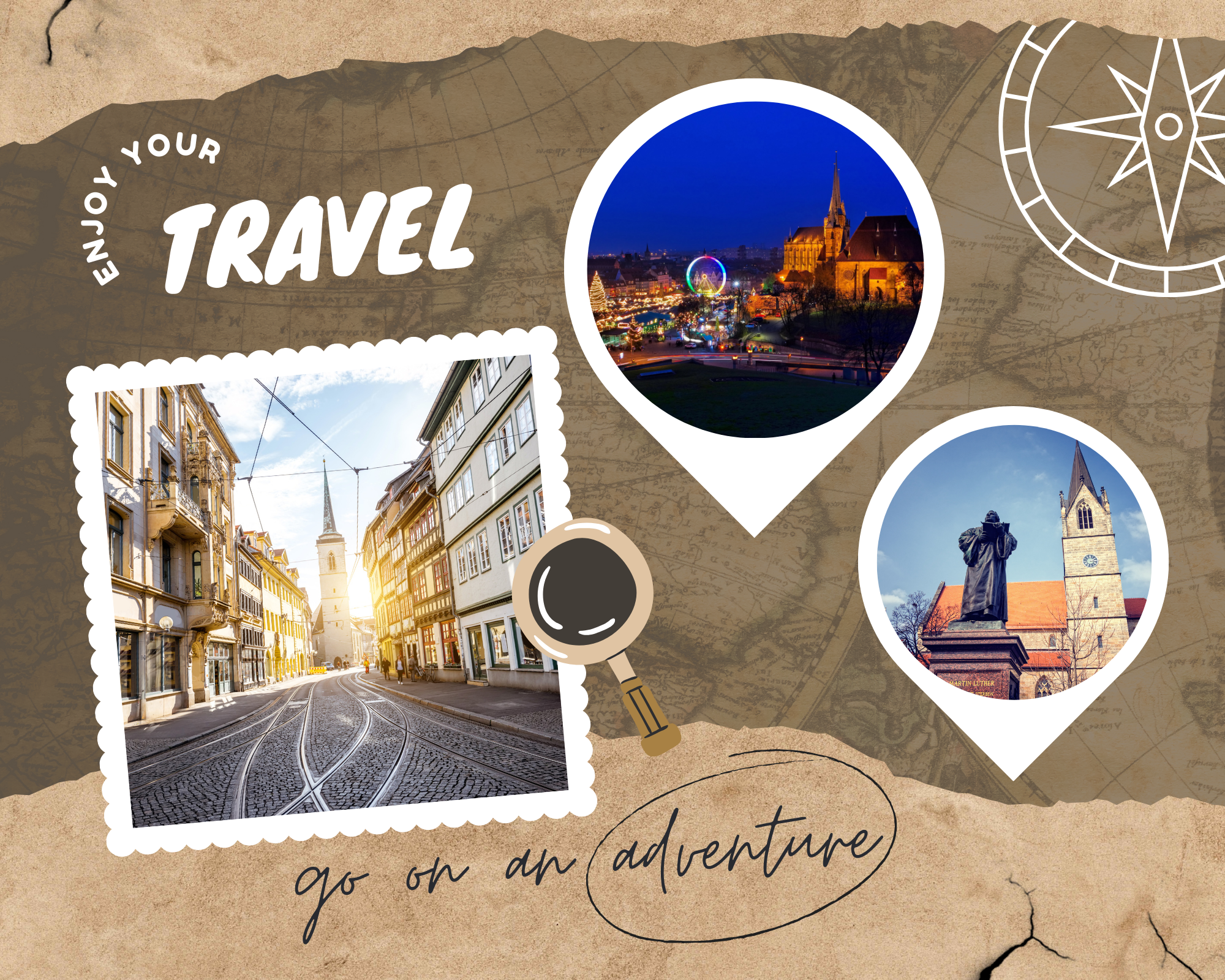
The old town of Celle
Celle is a town and capital of the district of Celle in Lower Saxony, in north-central Germany. The town is situated on the banks of the river Aller, a tributary of the Weser, and has a population of about 71,000. Celle is the southern gateway to the Lüneburg Heath, has a castle (Schloss Celle) built in the Renaissance and Baroque styles and a picturesque old town centre (the Altstadt) with more than 400 timber-framed houses, making Celle one of the most remarkable members of the German Timber-Frame Road. From 1378 to 1705 Celle was the official residence of the Lüneburg branch of the dukes of Brunswick-Lüneburg (House of Welf), who had been banished from their original ducal seat by its townsfolk.
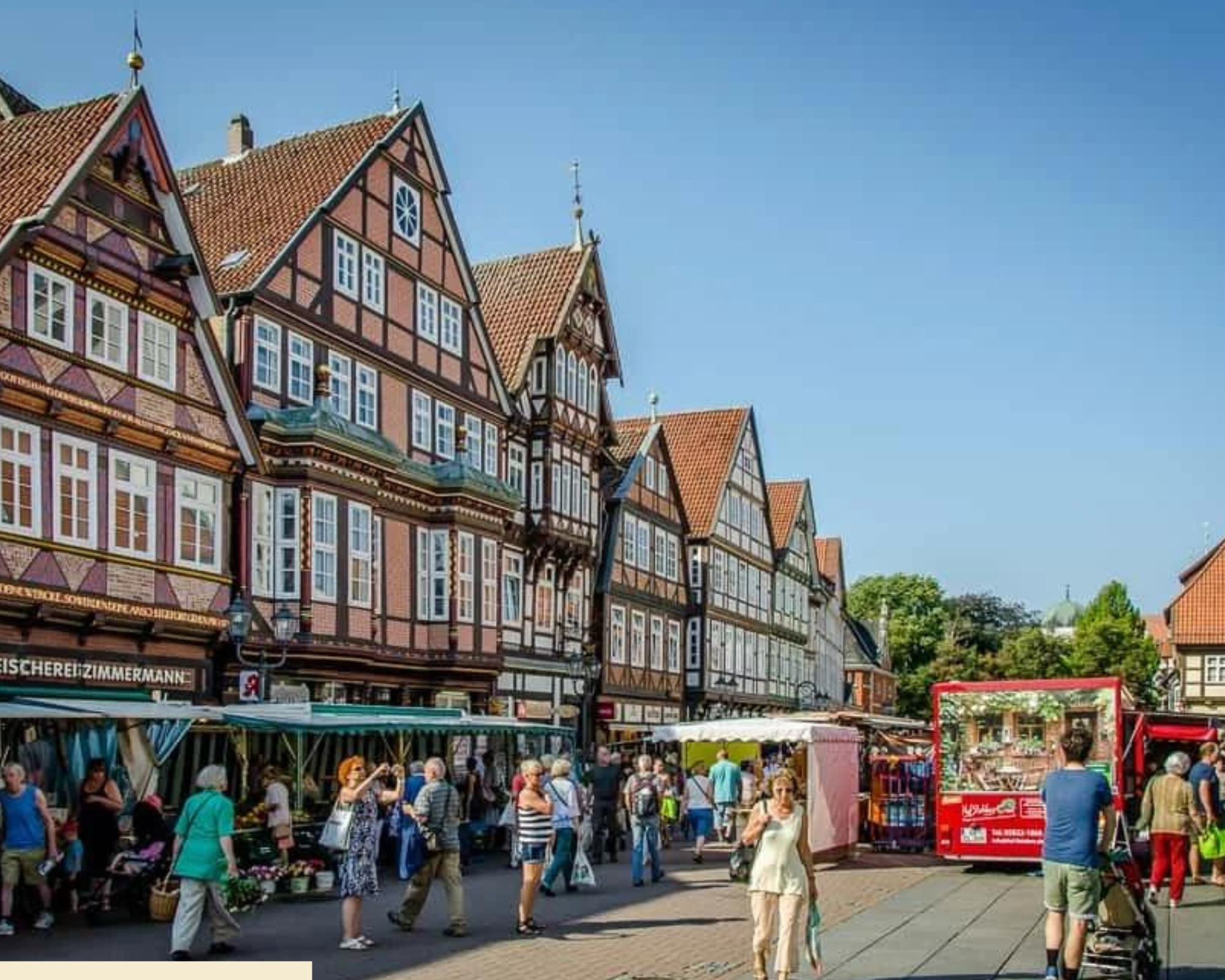
The old town of Görlitz
Görlitz is a town in the German state of Saxony. It is located on the river Lusatian Neisse, and is the largest town in Upper Lusatia as well as the second-largest town in the region of Lusatia, after Cottbus. Görlitz is the easternmost town in Germany (the easternmost village is Zentendorf (Šćeńc)), and lies opposite the Polish town of Zgorzelec, which was the eastern part of Görlitz until 1945. The town has approximately 56,000 inhabitants, which make Görlitz the sixth-largest town in Saxony. It is the seat of the district of Görlitz. Together with Zgorzelec, it forms the Euro City of Görlitz/Zgorzelec, which has a combined population of around 86,000. While not Lusatiophone itself, the town is situated just east of the Sorbian-speaking parts of Lusatia.
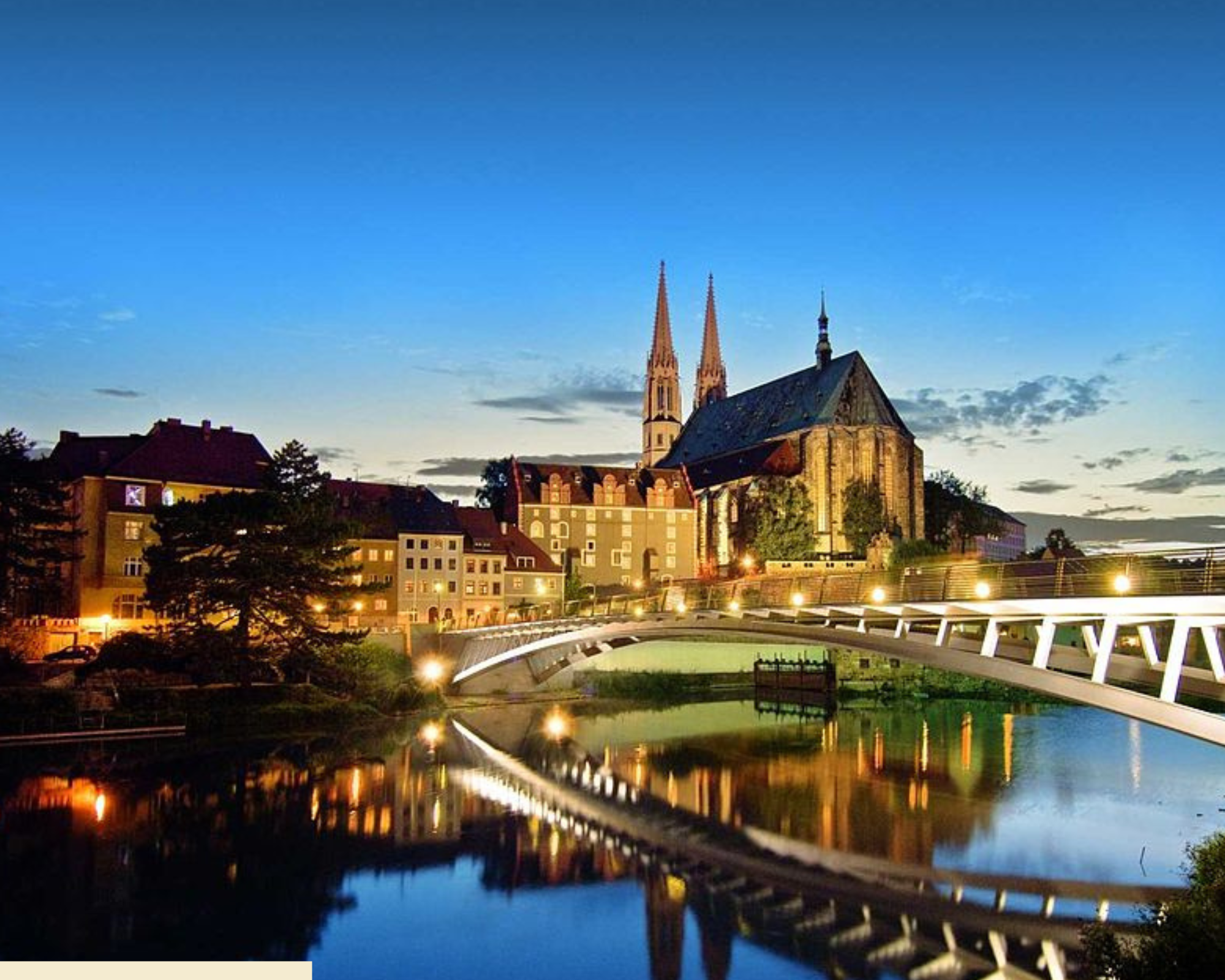
The old town of Wismar
Wismar is, with around 43,000 inhabitants, the sixth-largest city of the northeastern German state of Mecklenburg-Vorpommern, and the fourth-largest city of Mecklenburg after Rostock, Schwerin and Neubrandenburg. The city was the third-largest port city in former East Germany after Rostock and Stralsund.

Lübeck
Lübeck is a city in Northern Germany. With around 220,000 inhabitants, it is the second-largest city on the German Baltic coast and the second-largest city in the state of Schleswig-Holstein, after its capital of Kiel, and is the 36th-largest city in Germany. The city lies in the Holsatian part of Schleswig-Holstein, on the mouth of the Trave, which flows into the Bay of Lübeck in the borough of Travemünde, and on the Trave’s tributary Wakenitz. The island with the historic old town and the districts north of the Trave are also located in the historical region of Wagria. Lübeck is the southwesternmost city on the Baltic Sea, and the closest point of access to the Baltic from Hamburg. The city lies in the Holsatian dialect area of Low German.
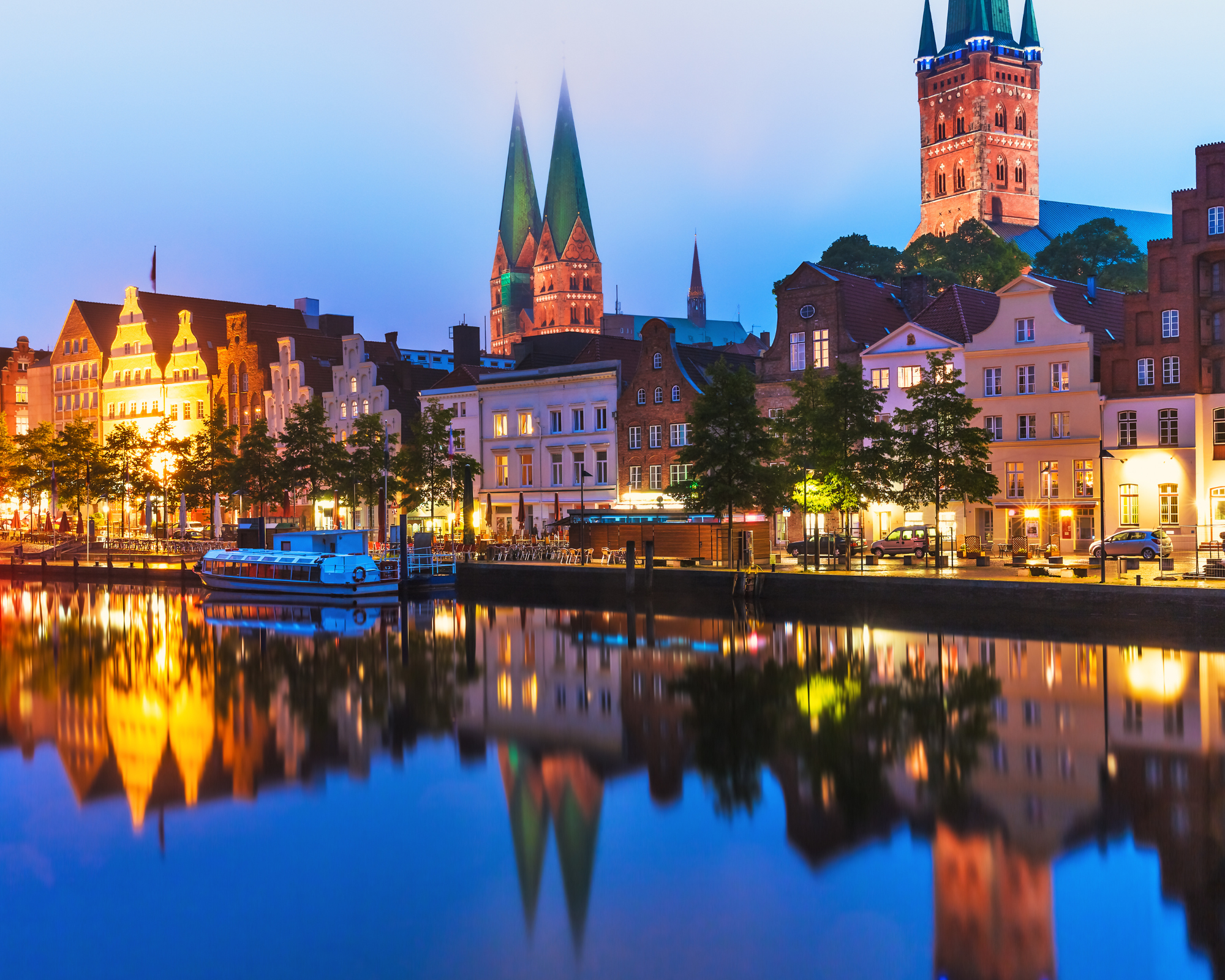
The old town of Heidelberg
Heidelberg is a city in the German state of Baden-Württemberg, situated on the river Neckar in south-west Germany. As of the 2016 census, its population was 159,914, of which roughly a quarter consisted of students. Located about 78 km (48 mi) south of Frankfurt, Heidelberg is the fifth-largest city in Baden-Württemberg. Heidelberg is part of the densely populated Rhine-Neckar Metropolitan Region.
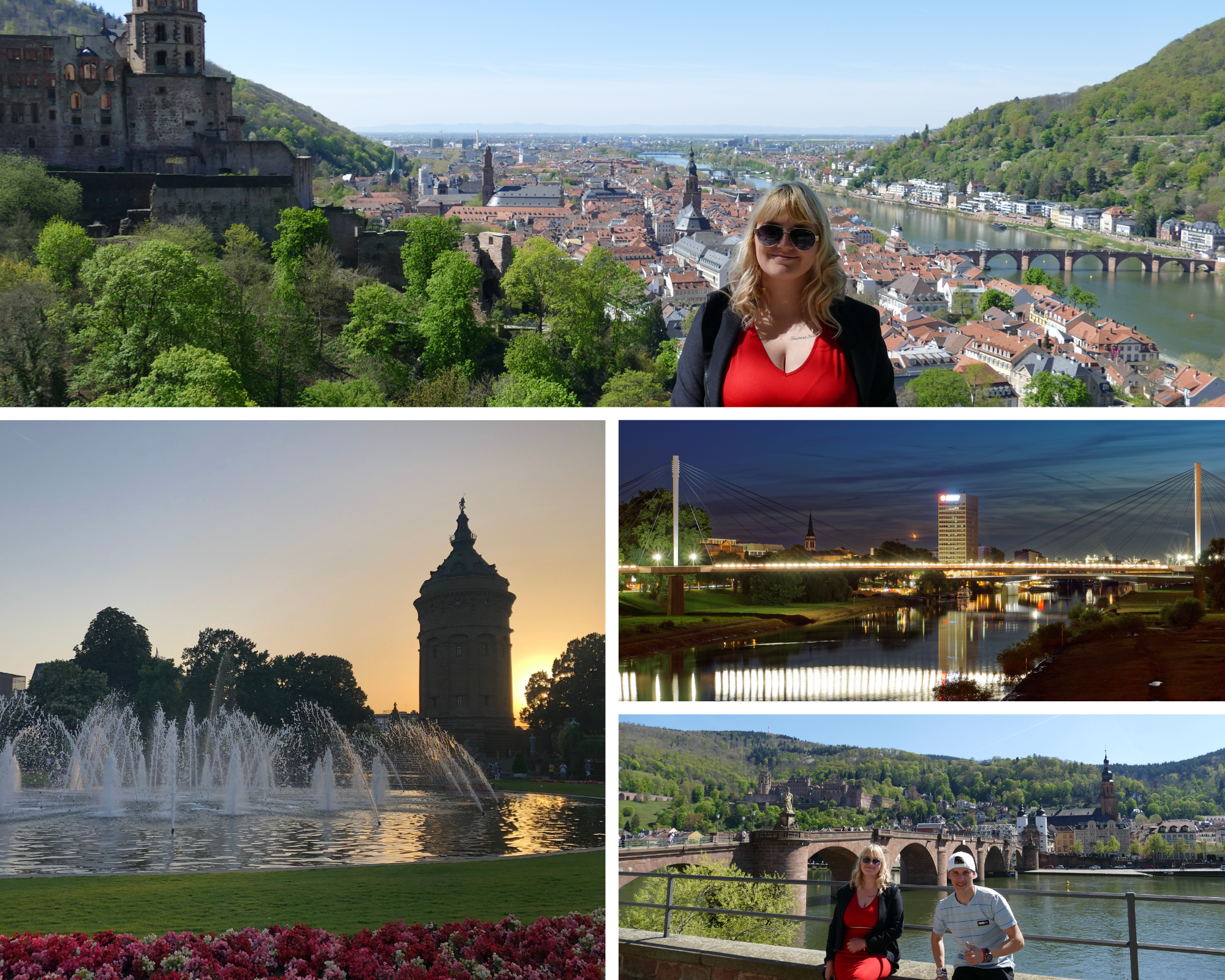
Trier
Trier is a city on the banks of the Moselle in Germany. It lies in a valley between low vine-covered hills of red sandstone in the west of the state of Rhineland-Palatinate, near the border with Luxembourg and within the important Moselle wine region.
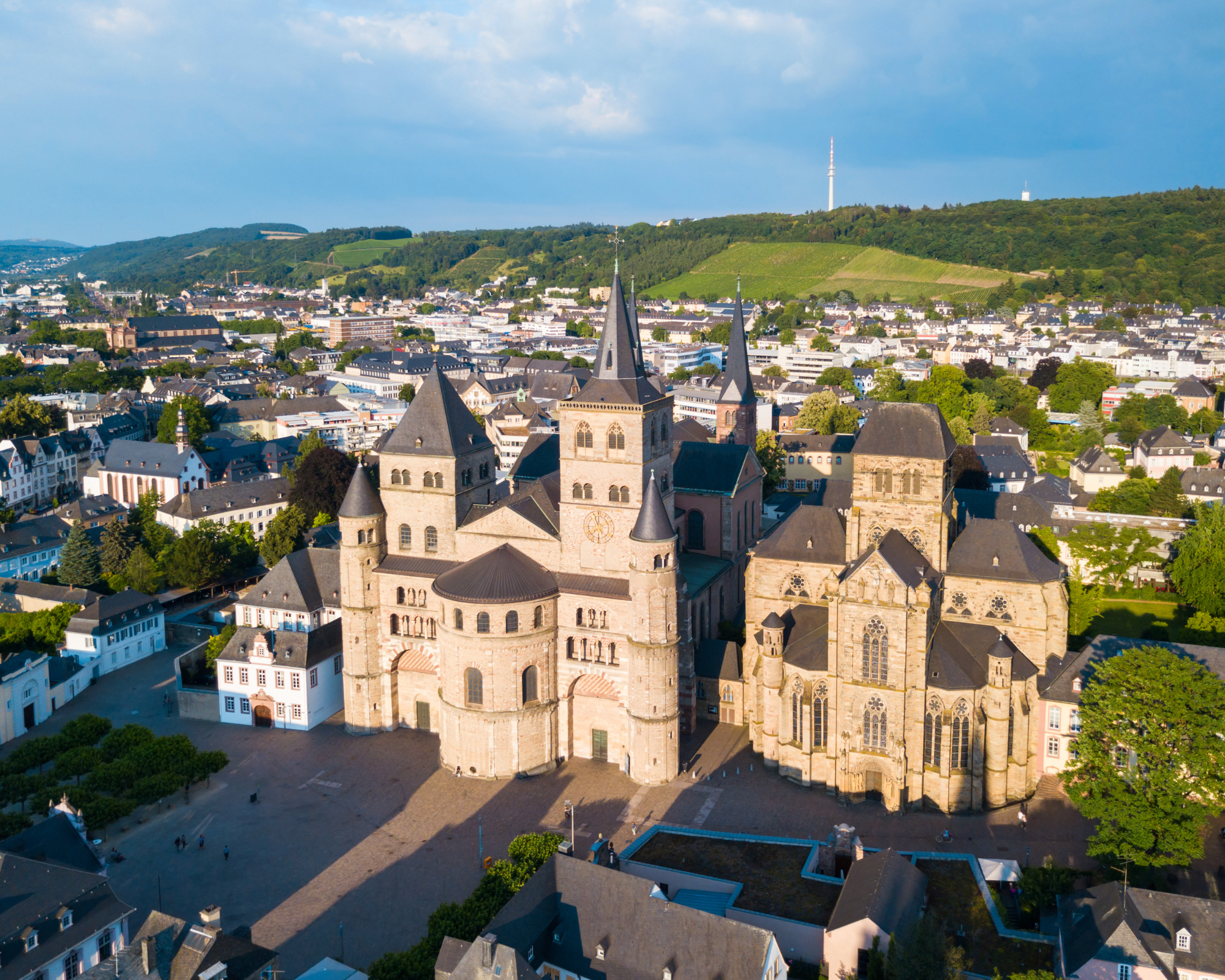
Rothenburg ob der Tauber
Rothenburg ob der Tauber is a town in the district of Ansbach of Mittelfranken (Middle Franconia), the Franconia region of Bavaria, Germany. It is well known for its well-preserved medieval old town, a destination for tourists from around the world. It is part of the popular Romantic Road through southern Germany. Today it is one of only three towns in Germany that still have completely intact city walls, the other two being Nördlingen and Dinkelsbühl, both also in Bavaria.
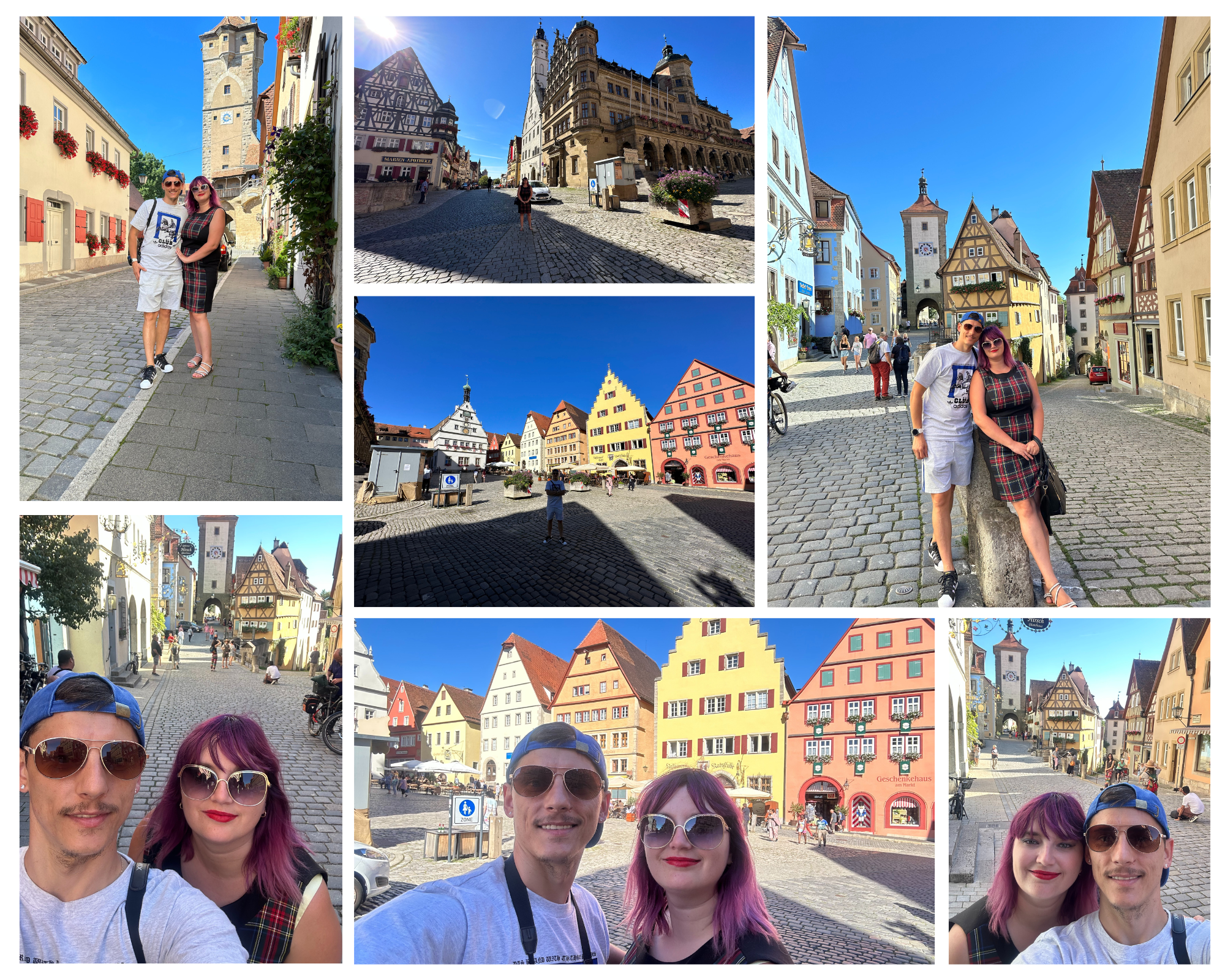
Quedlinburg
Quedlinburg is a town situated just north of the Harz mountains, in the district of Harz in the west of Saxony-Anhalt, Germany. As an influential and prosperous trading centre during the early Middle Ages, Quedlinburg became a center of influence under the Ottonian dynasty in the 10th and 11th centuries.[3] The castle, church and old town, dating from this time of influence, were added to the UNESCO World Heritage List in 1994 because of their exceptional preservation and outstanding Romanesque architecture.[3]
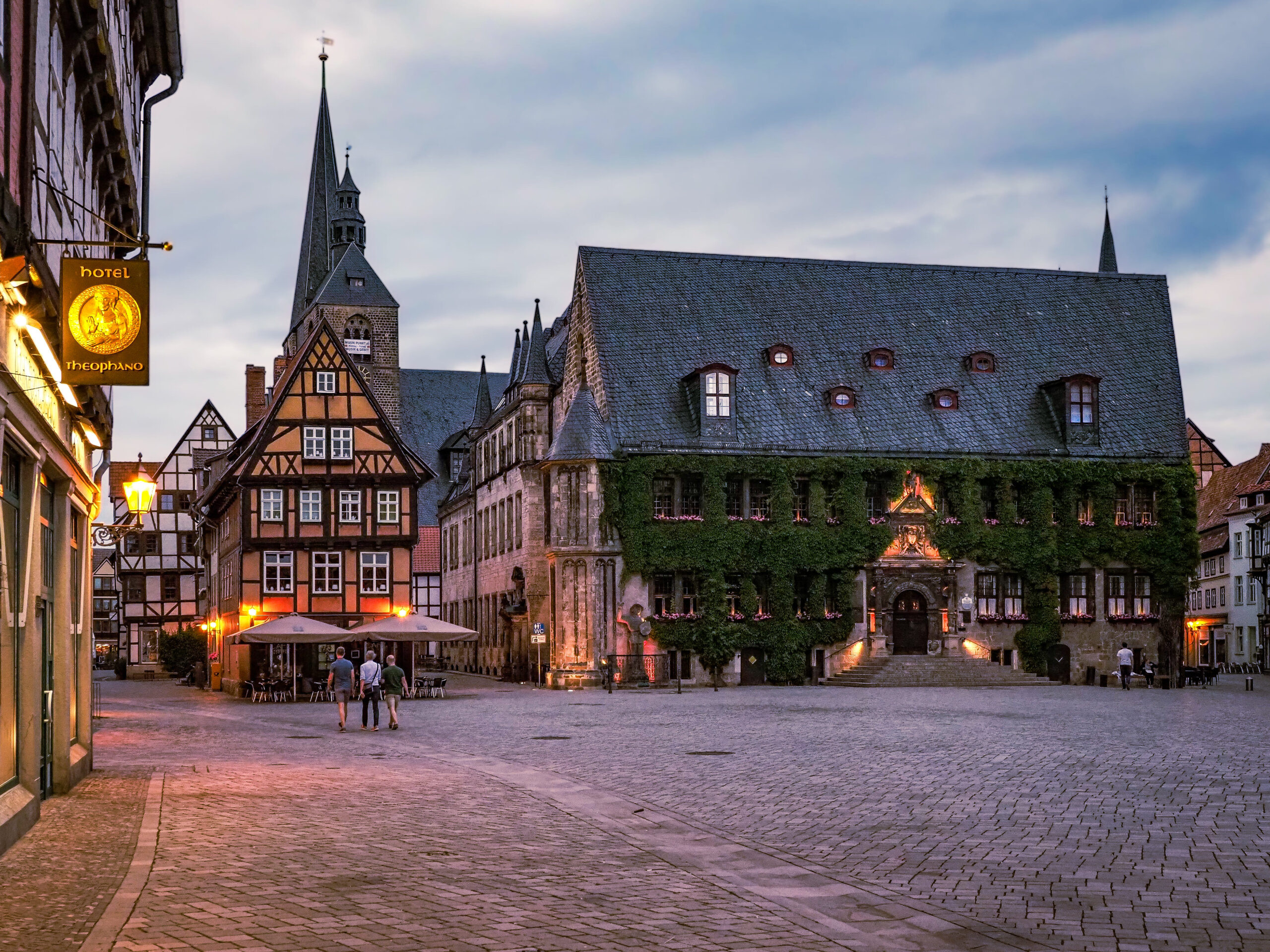
Bamberg
Bamberg is a town in Upper Franconia district in Bavaria, Germany, on the river Regnitz close to its confluence with the river Main. Bamberg had 79,000 inhabitants in 2022.[6] The town dates back to the 9th century, when its name was derived from the nearby Babenberch castle. Cited as one of Germany’s most beautiful towns, with medieval streets and buildings, the old town of Bamberg has been a UNESCO World Heritage Site since 1993.
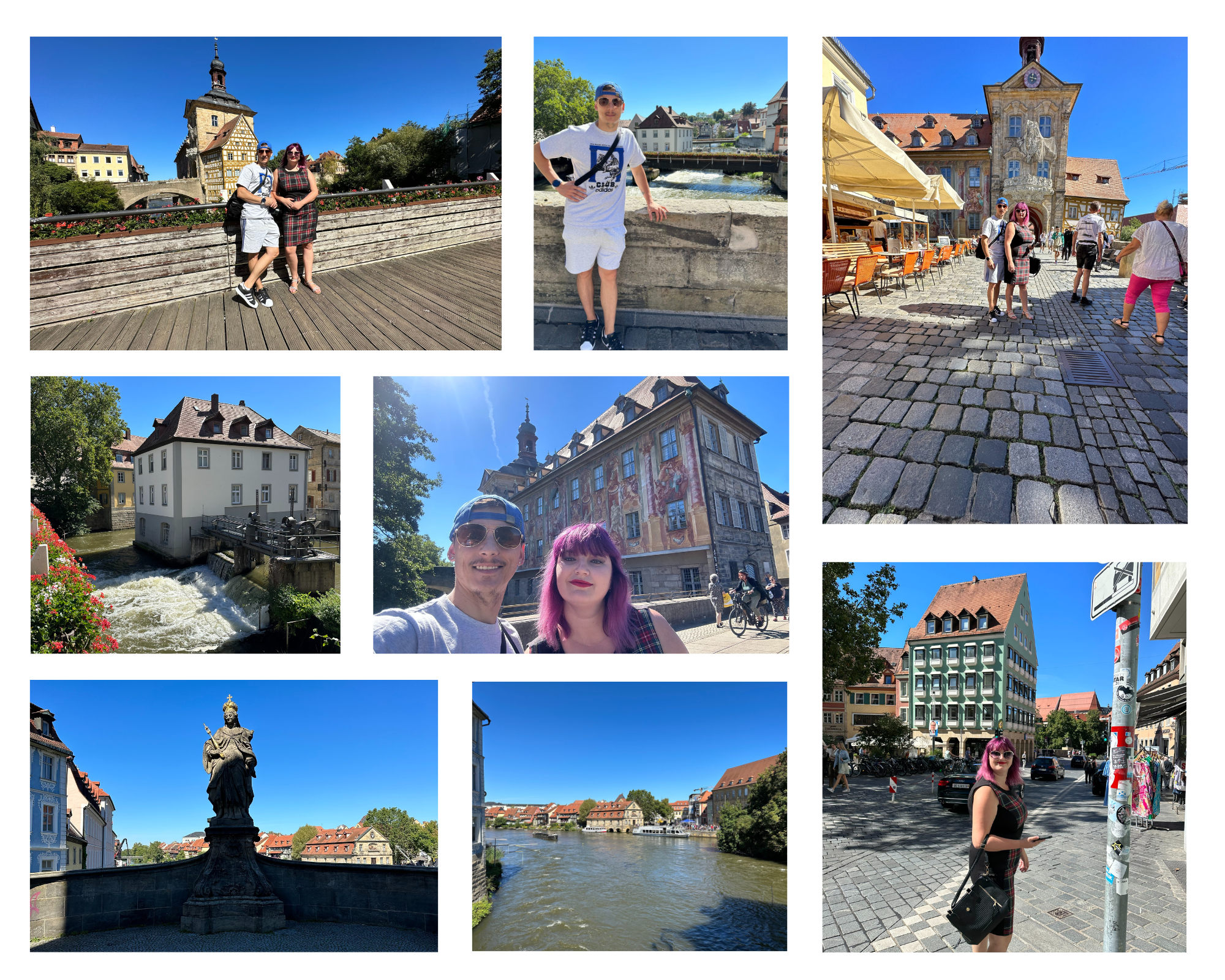
Wernigerode
Wernigerode is a town in the district of Harz, Saxony-Anhalt, Germany. Until 2007, it was the capital of the district of Wernigerode. Its population was 35,041 in 2012. Wernigerode is located southwest of Halberstadt, and is picturesquely situated on the Holtemme river, on the northern slopes of the Harz Mountains. Wernigerode is located on the German Timber-Frame Road.
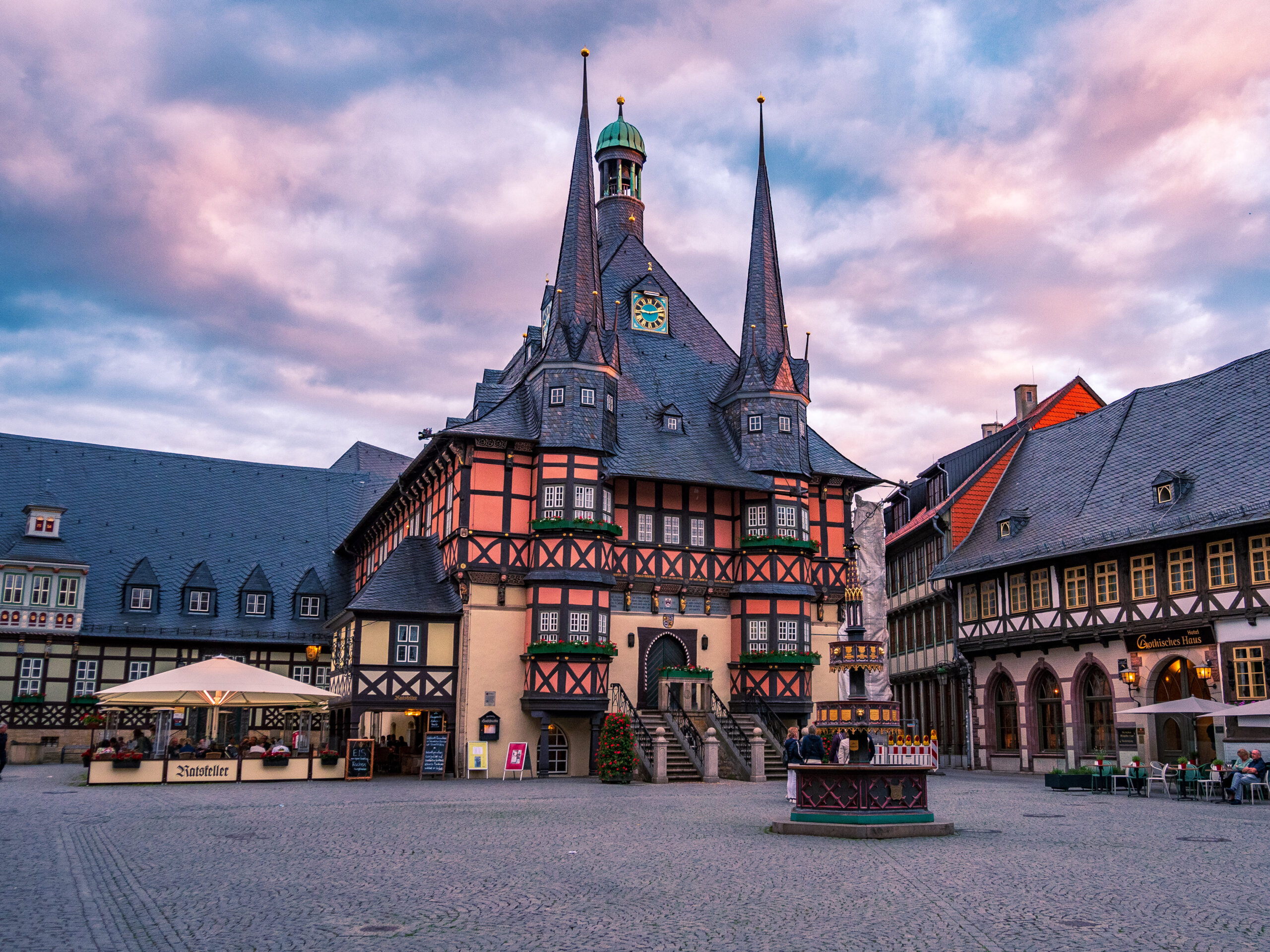
Bernkastel-Kues
Bernkastel-Kues is a town on the Middle Mosel in the Bernkastel-Wittlich district in Rhineland-Palatinate, Germany. It is a well-known winegrowing centre. The town is a state-recognized health resort (Erholungsort), seat of the Verbandsgemeinde of Bernkastel-Kues and birthplace of one of the most famous German polymaths, the mediaeval churchman and philosopher Nikolaus von Kues (Cusanus)
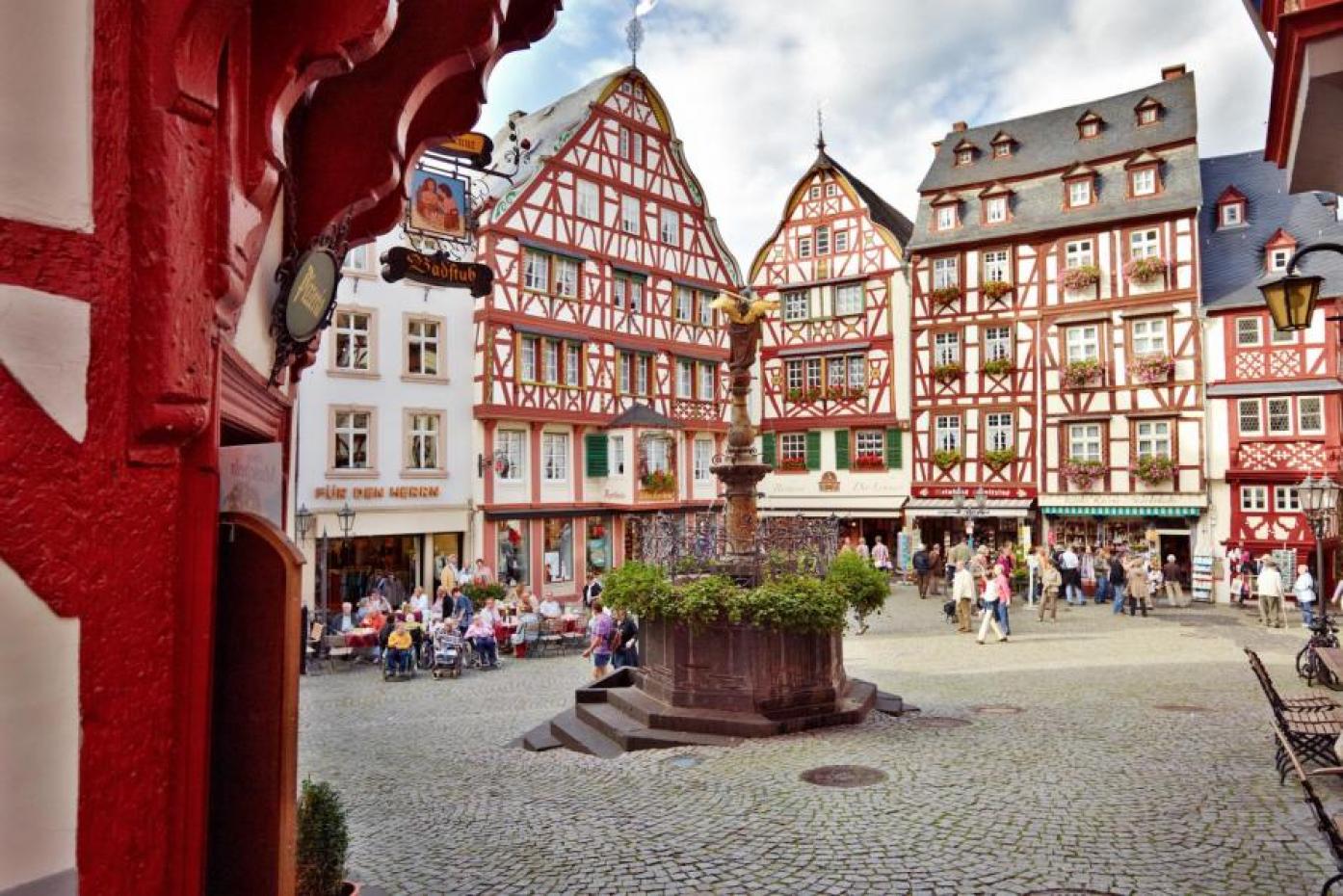
Triberg im Schwarzwald
Triberg im Schwarzwald is a town in Baden-Württemberg, Germany, located in the Schwarzwald-Baar district in the Black Forest. Triberg lies in the middle of the Black Forest between 500 and 1038 metres above sea level. Elektrizitäts-Gesellschaft Triberg, a regional utility, was founded 1896 by Friedrich Wilhelm Schoen, Wilhelm Eduard von Schoen and the famous industrialist and inventor Carl von Linde. It is still active today and partially owned by local municipalities. Watchmaking was once a thriving local industry, but no longer plays a central role in the economy. A private hospital, Asklepios Klinik, is the town’s major employer.
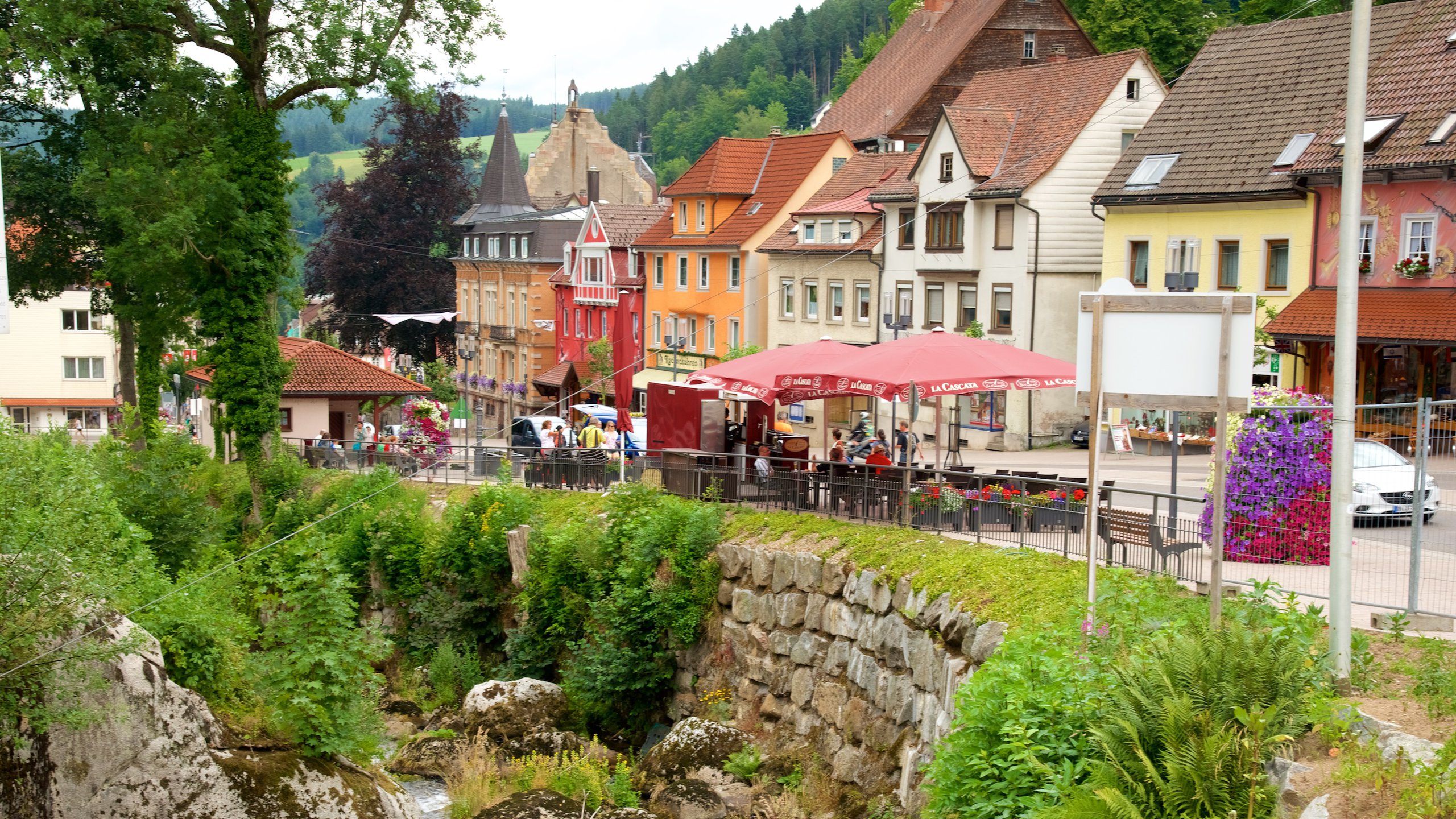
Binz
Binz is the largest seaside resort city on the German island of Rügen. It is situated between the bay of Prorer Wiek and the Schmachter See (a lake) in the southeast of the island. To the north of Binz stretches the Schmale Heide (the “narrow heath”), a tongue of land which joins the Muttland region of Rügen to the Jasmund peninsula. The land to the south and east of Binz is hilly, reaching a height of over 100 metres above sea level. Binz is known for its well-kept historical resort architecture and natural scenery, close to the Jasmund National Park and its chalk cliffs.
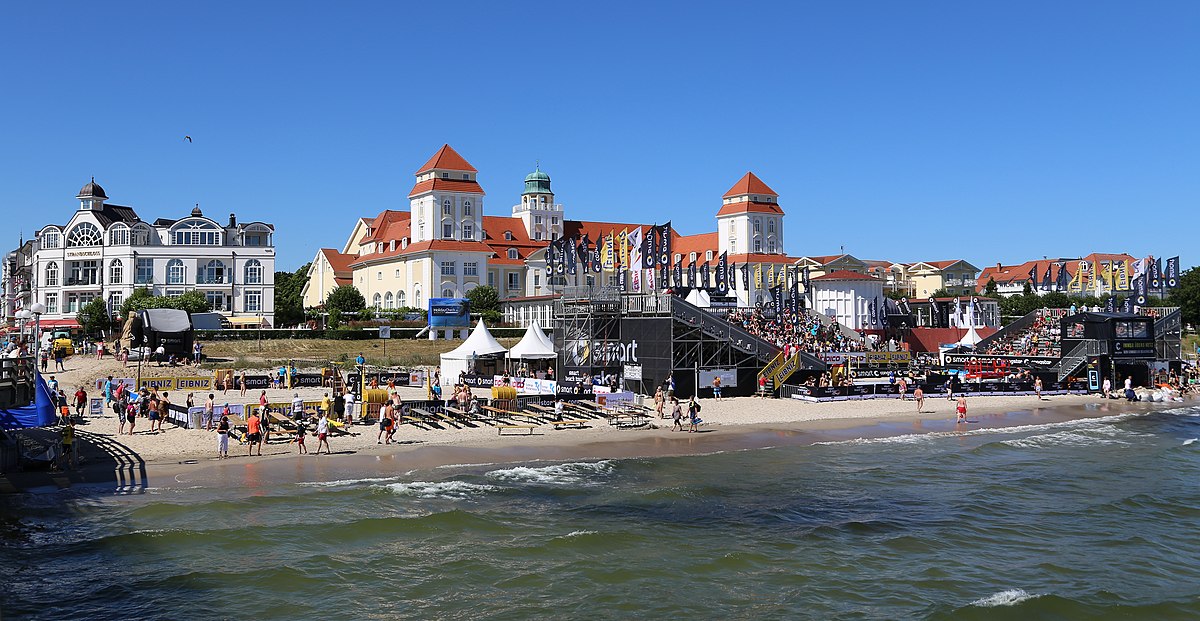
Bad Wimpfen
Bad Wimpfen is a historic spa town in the district of Heilbronn in the Baden-Württemberg region of southern Germany. It lies north of the city of Heilbronn, on the river Neckar. Bad Wimpfen is located on the west bank of the River Neckar, around 15 kilometres (9 mi) north of Heilbronn. The town is divided into two parts: the older Wimpfen im Tal (Lower Wimpfen/ literally Wimpfen in the valley) situated on the Neckar, and Wimpfen am Berg (Upper Wimpfen/ literally Wimpfen on the hill) containing the town centre. Besides the town itself, the village Hohenstadt also belongs to Bad Wimpfen.
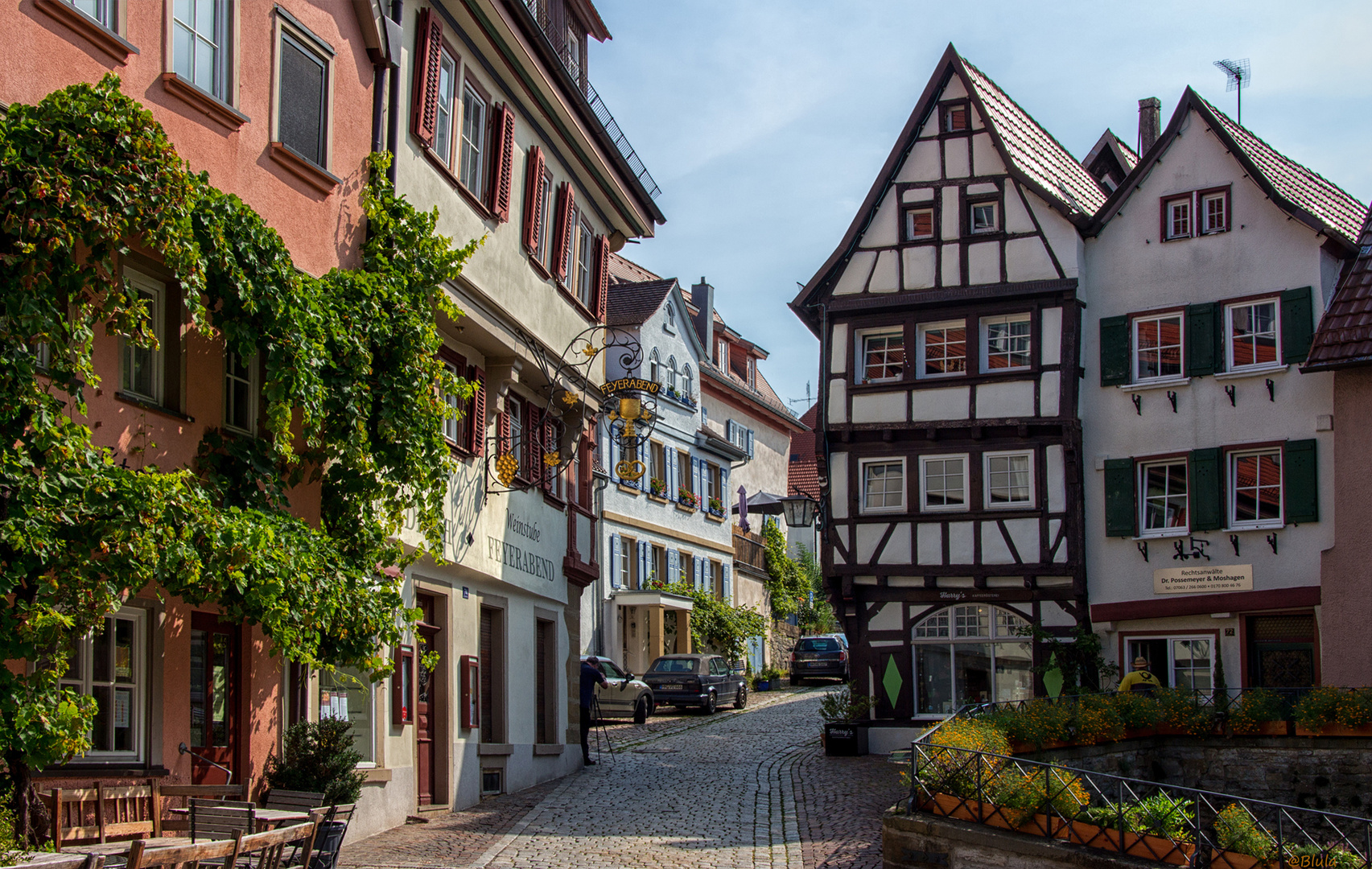
Füssen, Bavaria
Füssen was settled in Roman times, on the Via Claudia Augusta, a road that leads southwards to northern Italy and northwards to Augusta Vindelicum (today’s Augsburg), the former regional capital of the Roman province Raetia. The original name of Füssen was “Foetes”, or “Foetibus” (inflected), which derives from Latin “Fauces”, meaning “gorge”, probably referring to the Lech gorge. In Late Antiquity Füssen was the home of a part of the Legio III Italica, which was stationed there to guard the important trade route over the Alps.
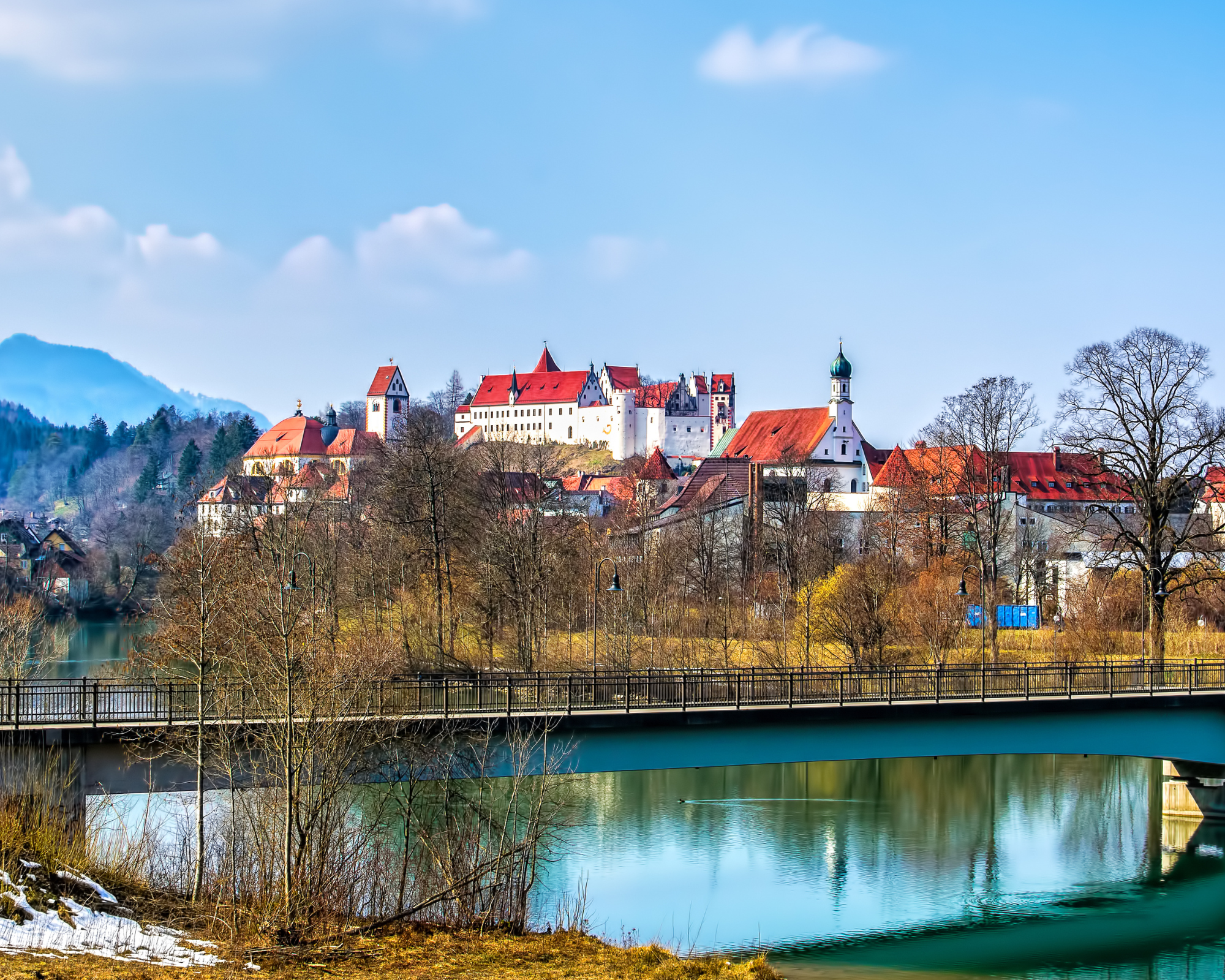
Bacharach
Bacharach, is a town in the Mainz-Bingen district in Rhineland-Palatinate, Germany. It belongs to the Verbandsgemeinde of Rhein-Nahe, whose seat is in Bingen am Rhein, although that town is not within its bounds. The original name Baccaracus suggests a Celtic origin. Above the town stands Stahleck Castle (Burg Stahleck), now a youth hostel.
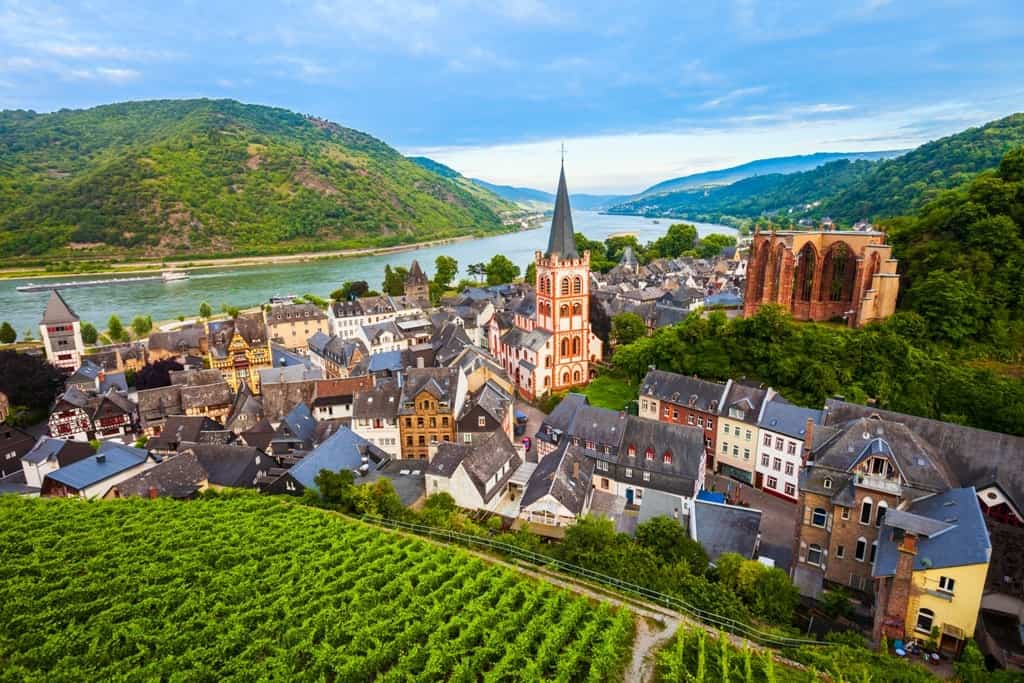
Rottach-Egern
Rottach-Egern is a municipality and town located at Lake Tegernsee in the district of Miesbach in Upper Bavaria, Germany, about 55 km (35 miles) south of central Munich. Late Austrian actor Walter Slezak is buried in this area.
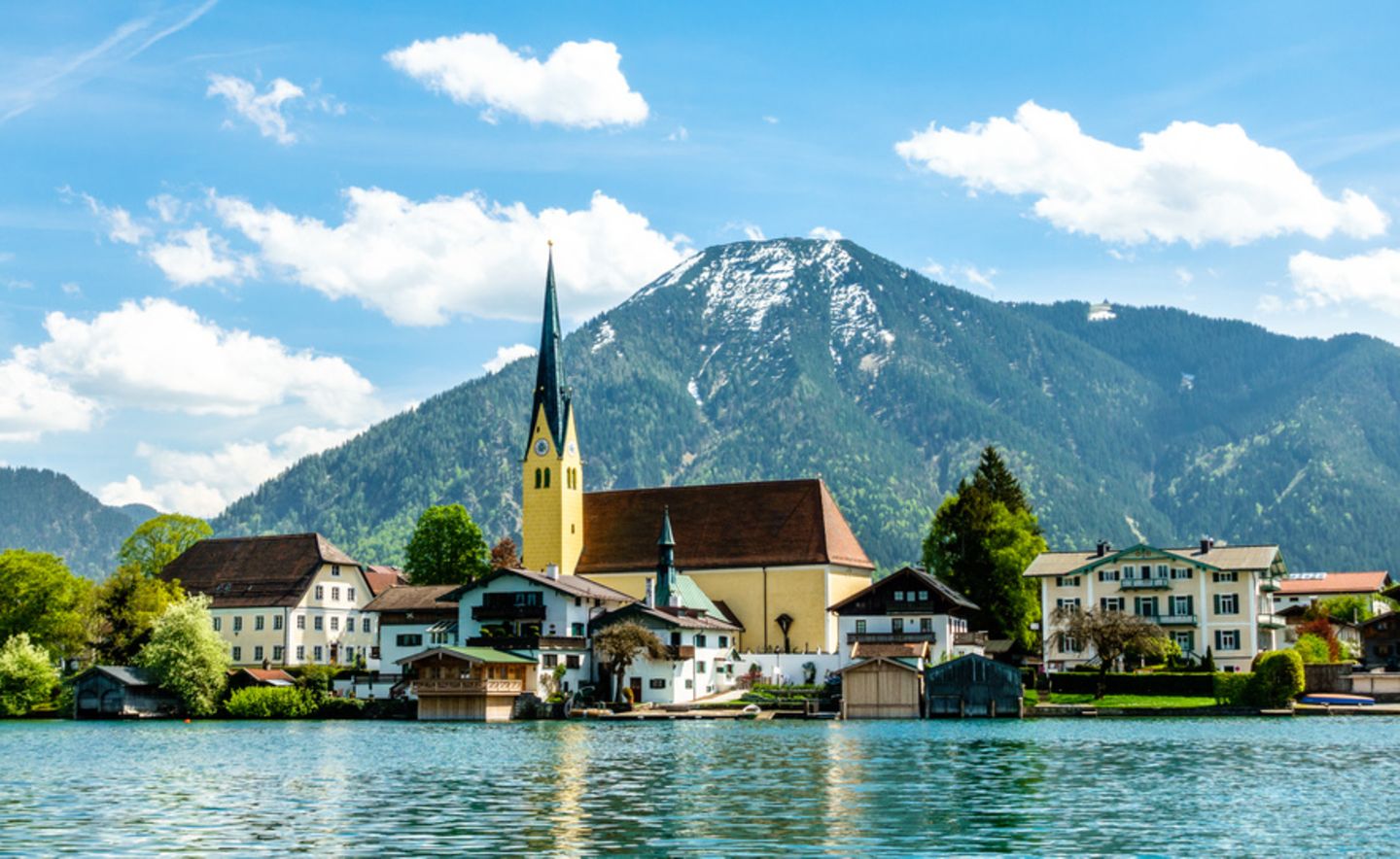
Schwerin
Schwerin is the capital and second-largest city of the northeastern German state of Mecklenburg-Vorpommern as well as of the region of Mecklenburg, after Rostock. It has around 96,000 inhabitants, and is thus the least populous of all German state capitals.
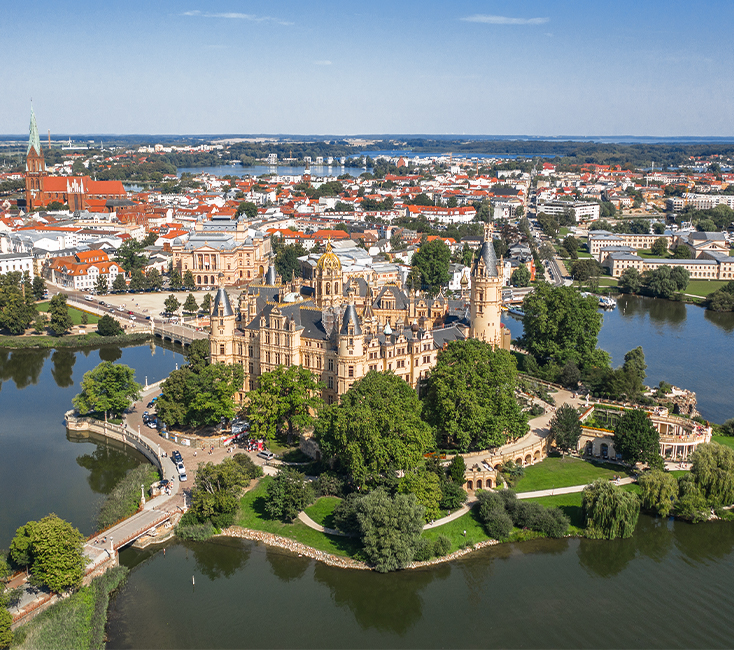
Ramsau
Ramsau is a German municipality in the Bavarian Alps with a population of around 1,800. It is a district located in the Berchtesgadener Land in Bavaria, close to the border with Austria, 35 km south of Salzburg and 150 km south-east of Munich. It is situated north of the Berchtesgaden National Park. Notable sights of Ramsau include the third highest mountain in Germany called the Watzmann, Lake Hintersee, and the village’s church.
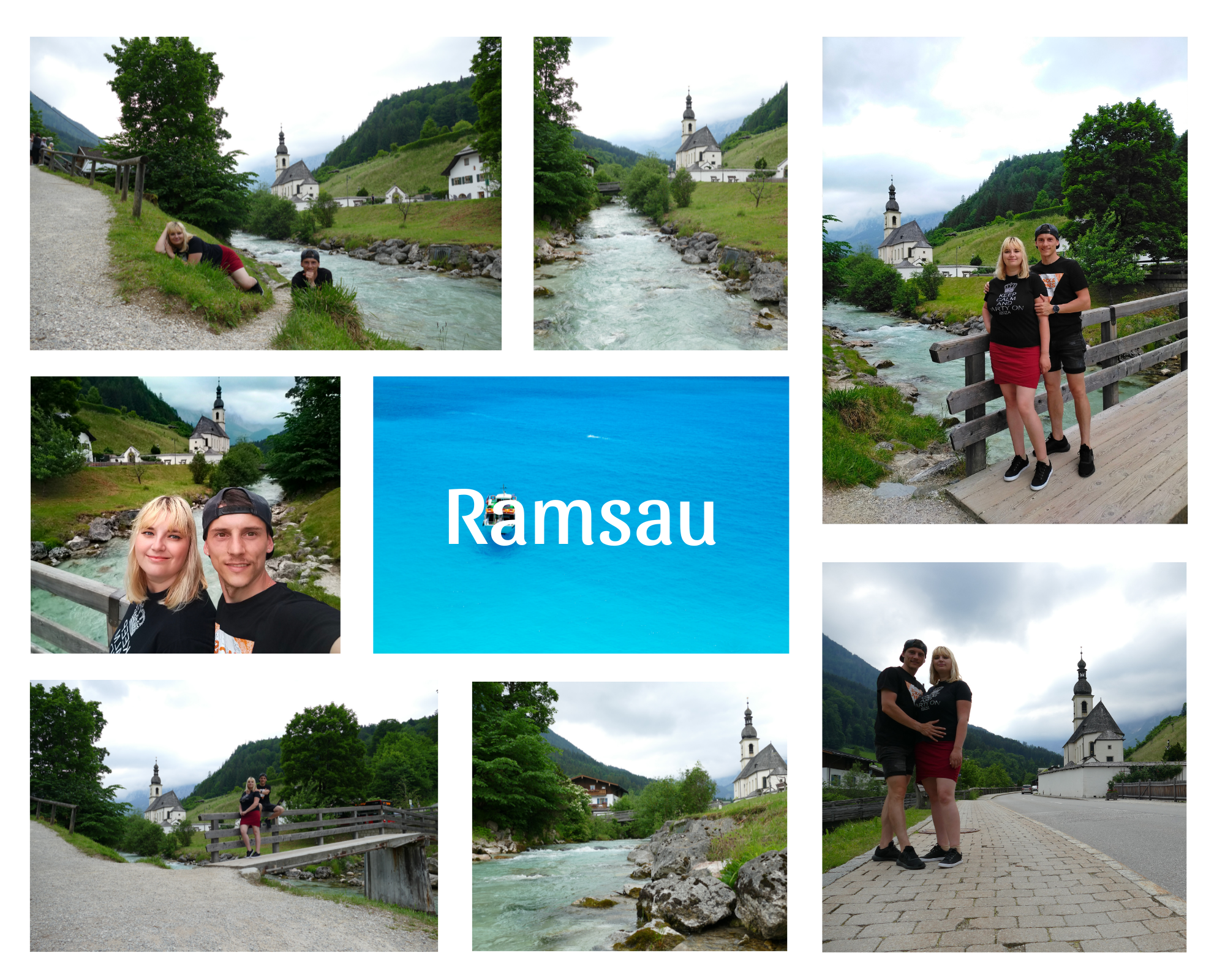
Meißen
Meissen is a town of approximately 30,000 about 25 km (16 mi) northwest of Dresden on both banks of the Elbe river in the Free State of Saxony, in eastern Germany. Meissen is the home of Meissen porcelain, the Albrechtsburg castle, the Gothic Meissen Cathedral and the Meissen Frauenkirche. The Große Kreisstadt is the capital of the Meissen district.
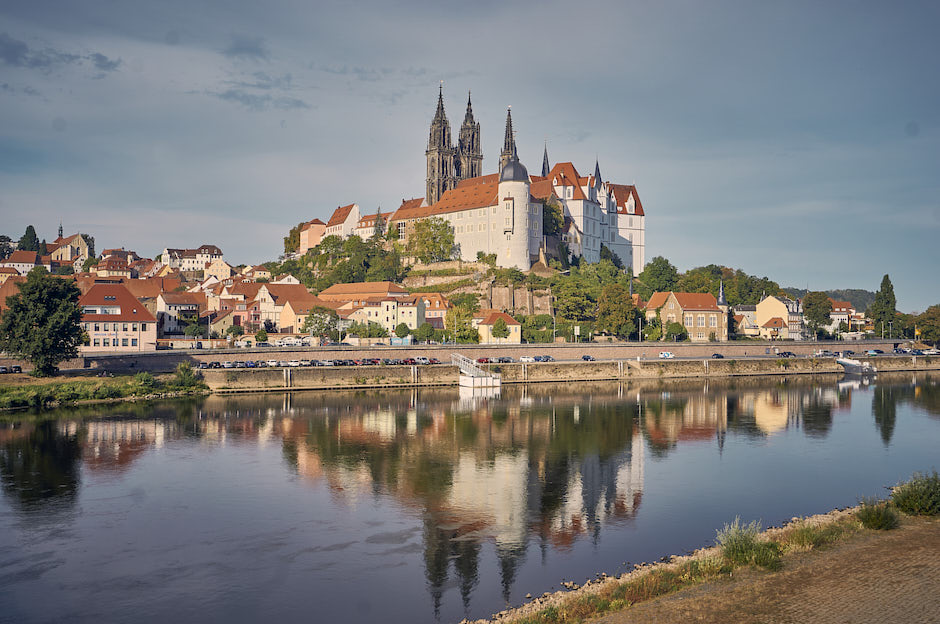
Regensburg
Danube’s northernmost point. It is the capital of the Upper Palatinate subregion of the state in the south of Germany. With more than 150,000 inhabitants, Regensburg is the fourth-largest city in the State of Bavaria after Munich, Nuremberg and Augsburg. From its foundation as an imperial Roman river fort, the city has been the political, economic and cultural centre of the surrounding region; it is still known in the Romance languages as a cognate of its Latin name of Ratisbona. Later, under the rule of the Holy Roman Empire, it housed the Perpetual Diet of Regensburg.
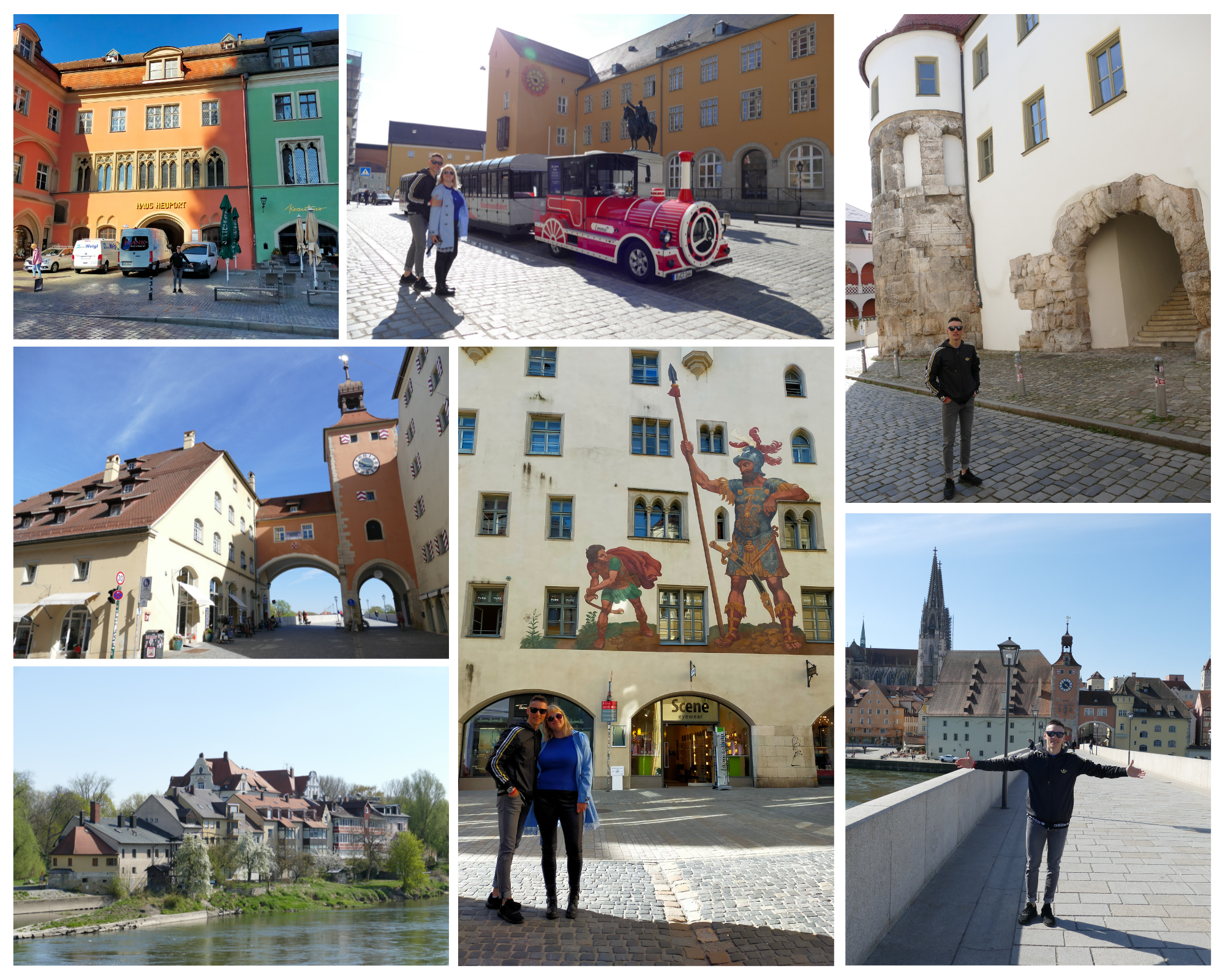
Lindau
Lindau is a major town and island on the eastern side of Lake Constance (Bodensee in German) in Bavaria, Germany. It is the capital of the county (Landkreis) of Lindau, Bavaria and is near the borders of the Austrian state of Vorarlberg, and the Swiss cantons of St. Gallen and Thurgau. The coat of arms of Lindau town is a linden tree, referring to the supposed origin of the town’s name.[a] The historic town of Lindau is located on the 0.68-square-kilometre (0.26 sq mi) island of the same name, which is connected with the mainland by a road bridge and a railway causeway leading to Lindau station.
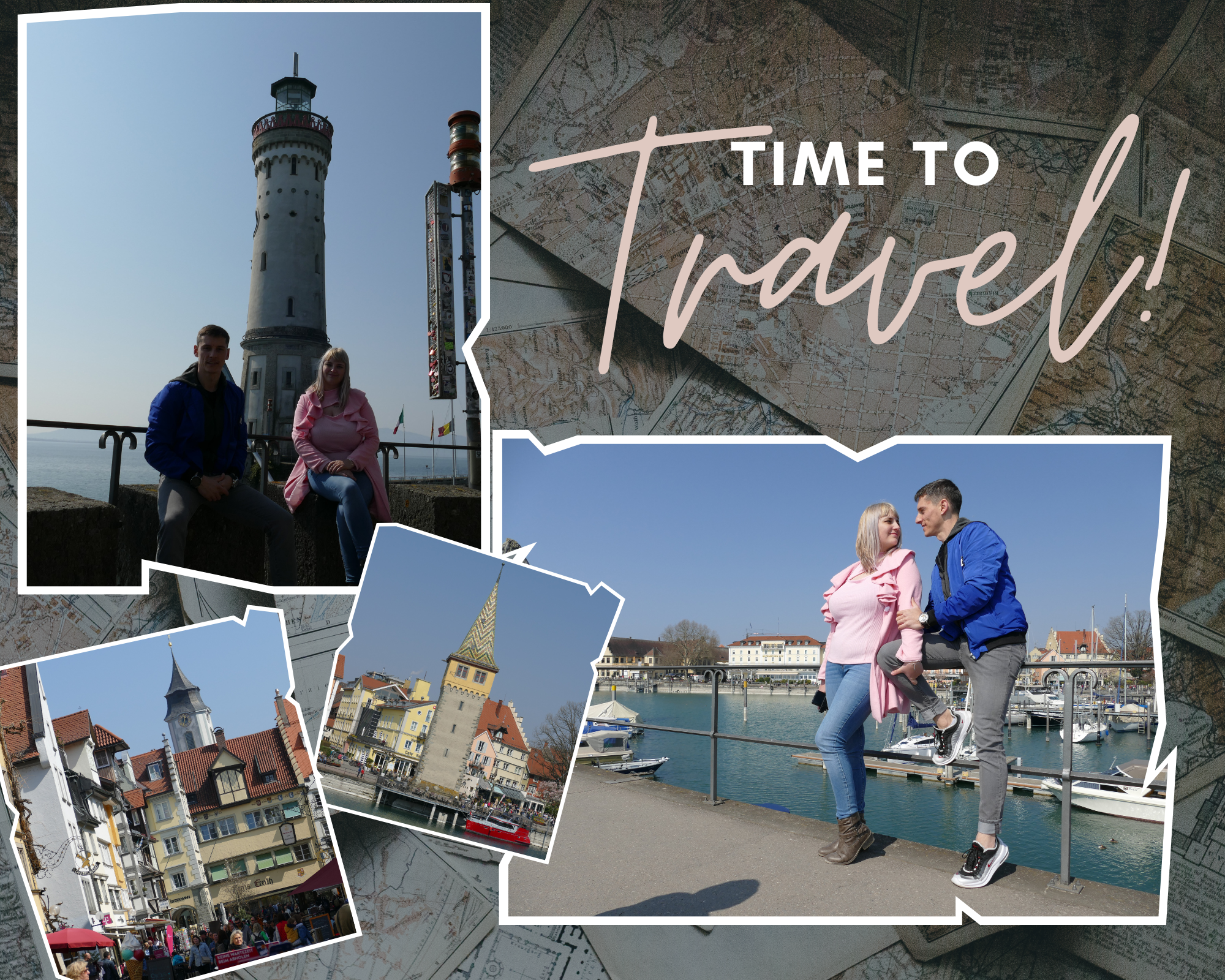
Meersburg
Meersburg is a town in Baden-Württemberg in the southwest of Germany. It is on Lake Constance. Vineyards, Meersburg, Lake Constance and Alps Duration: 2 minutes and 22 seconds.2:22 Meersburg 2010 It is known for its medieval city. The lower town (“Unterstadt”) and upper town (“Oberstadt”) are reserved for pedestrians only, and connected by two stairways and a steep street (“Steigstrasse”).
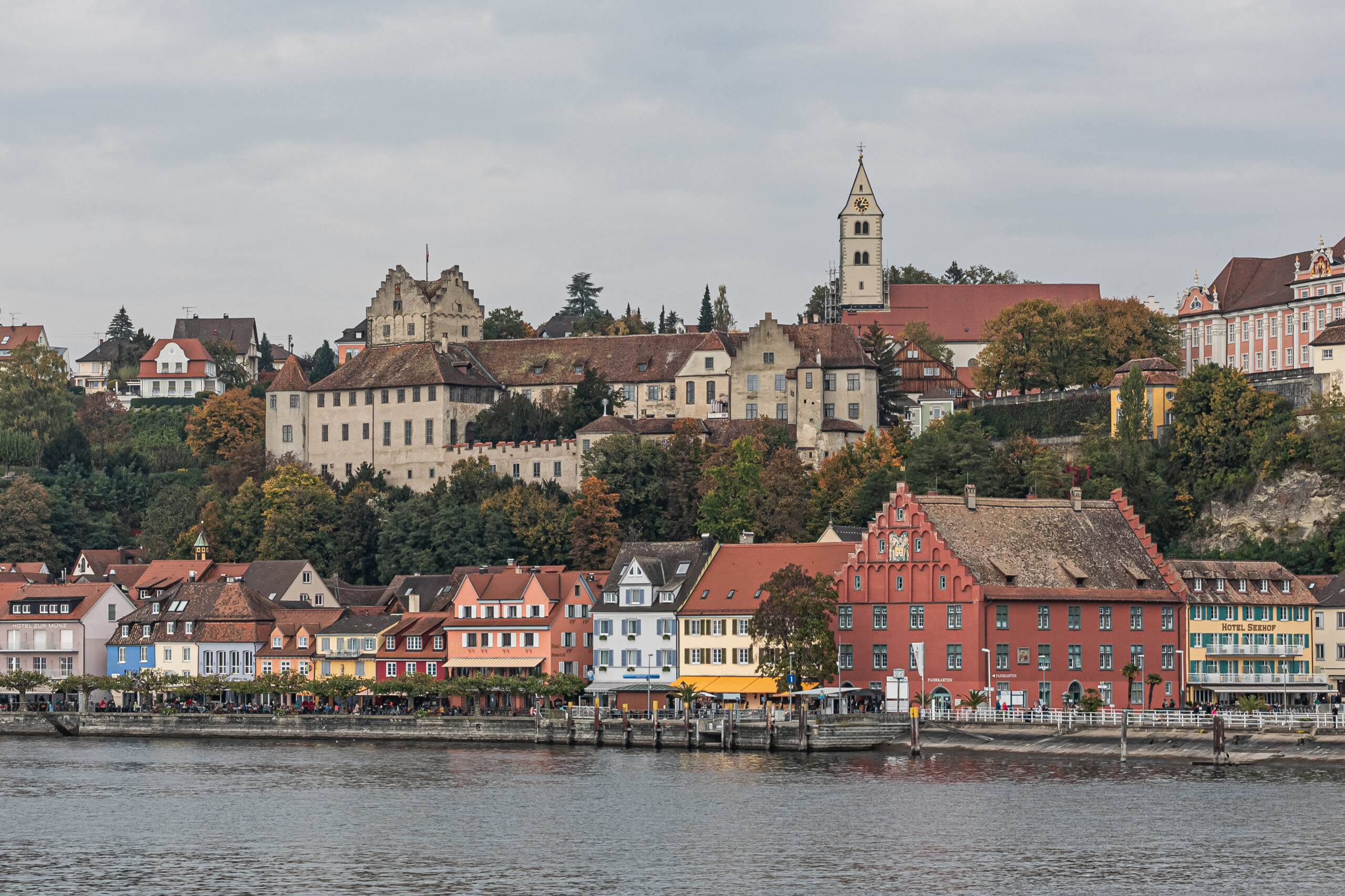
Altena, North Rhine-Westphalia
Altena is a town in the district of Märkischer Kreis, North Rhine-Westphalia, Germany. The town’s castle is the origin for the later Dukes of Berg. Altena is situated on the Lenne river valley, in the northern stretches of the Sauerland.Altena Castle was built in the early 12th century, as a stronghold of the older Counts of Berg. A short time later a village was founded beneath the hill, with the castle alongside the river Lenne, which feeds into the river Ruhr. After the distribution of the Berg family estates in 1161, Altena became the centre of the County of Altena. The first Count of Altena became Eberhard I, Count of Berg-Altena. In 1180, after the death of the first count, the county was divided between the two oldest sons: Arnold of Altena and Friedrich of Altena.
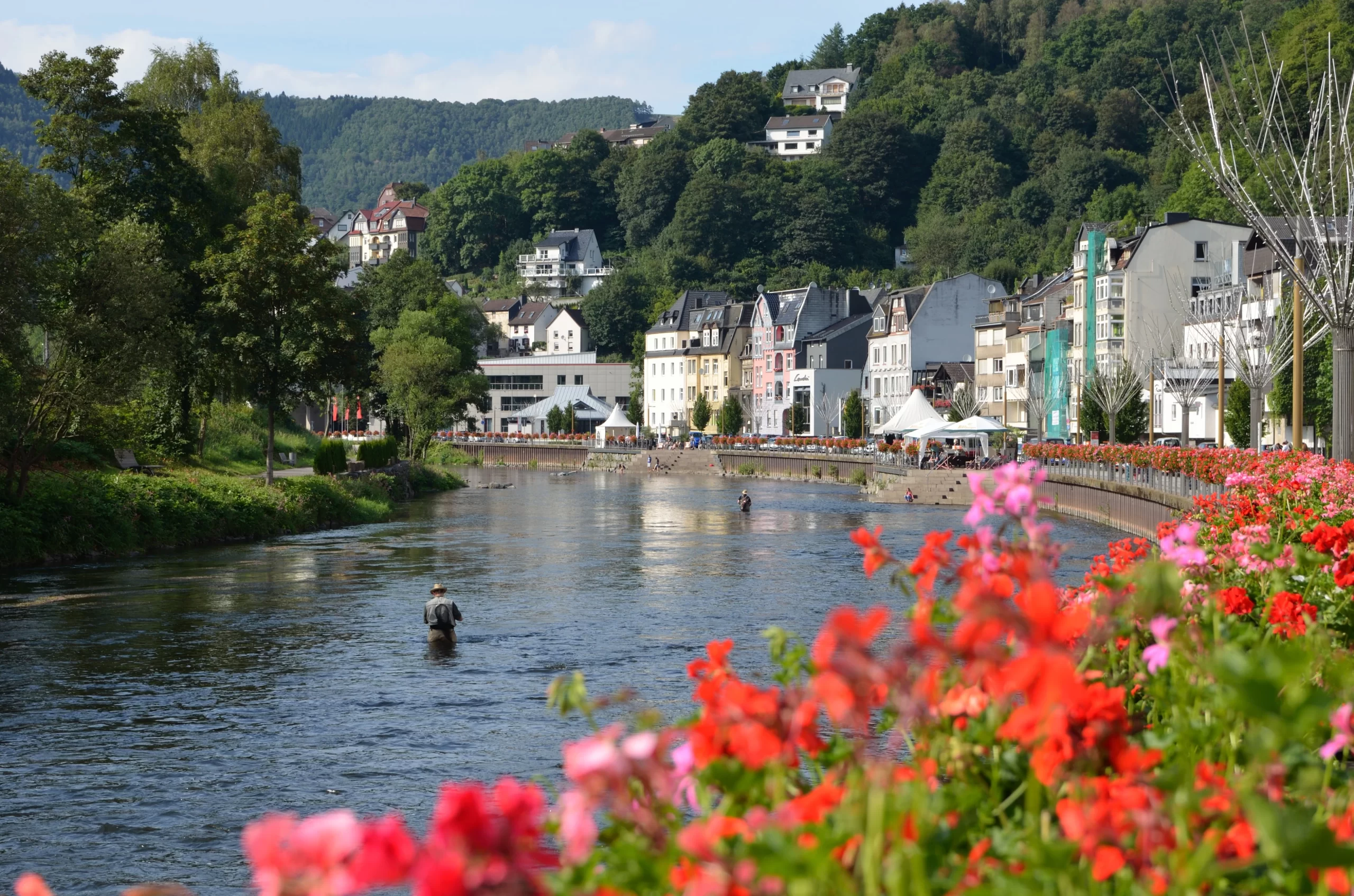
Rüdesheim am Rhein
Rüdesheim am Rhein is a German winemaking town in the Rhine Gorge, and part of the UNESCO World Heritage Site in this region. It lies in the Rheingau-Taunus-Kreis district in the Regierungsbezirk of Darmstadt, Hessen. Known as Rüdesheim, it is officially Rüdesheim am Rhein, to distinguish it from Rüdesheim an der Nahe. It is a major tourist attraction, especially for foreign visitors.
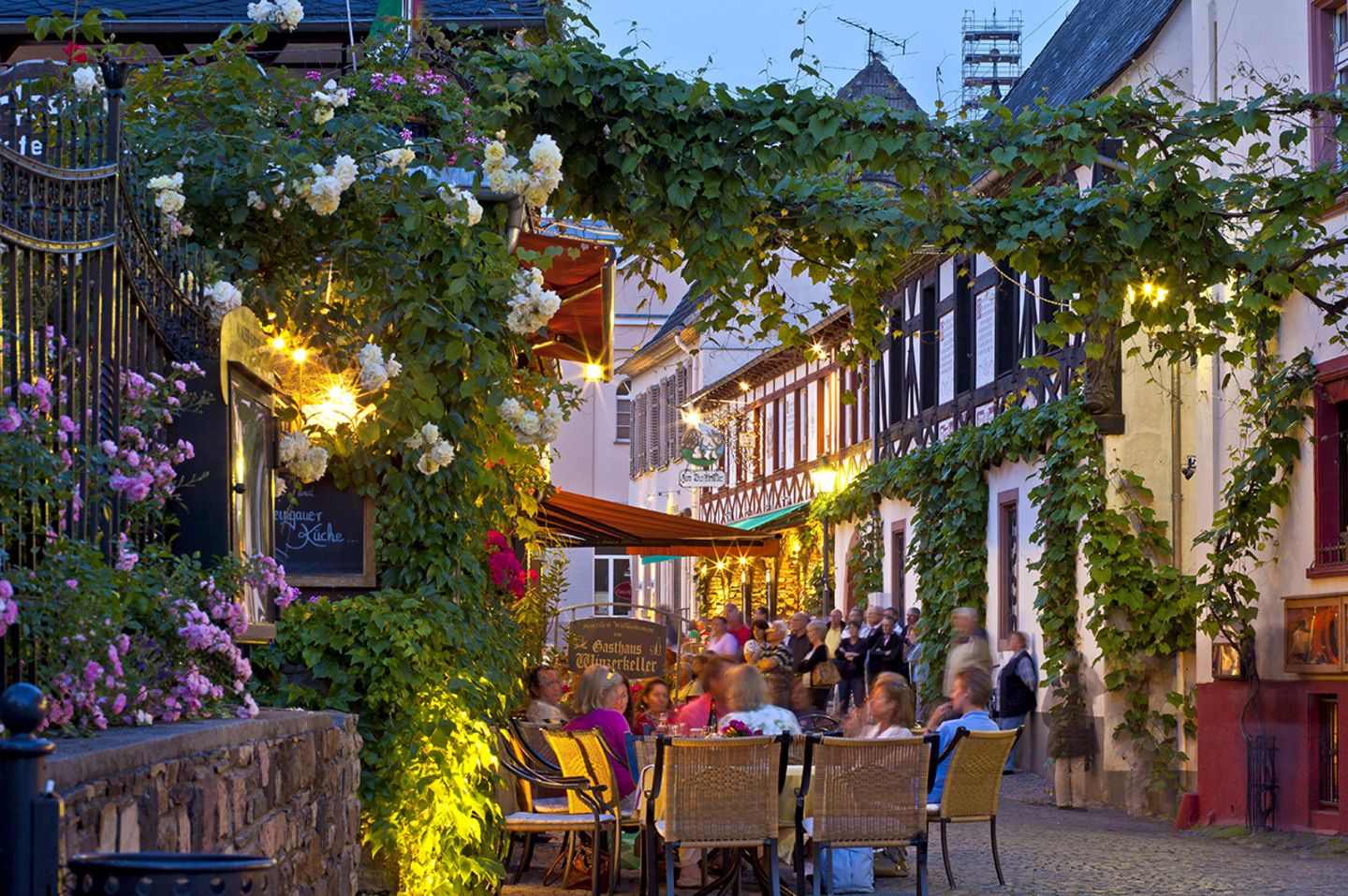
Ahrenshoop
Ahrenshoop is a municipality in the Vorpommern-Rügen district, in Mecklenburg-Vorpommern, Germany on the Fischland-Darß-Zingst peninsula of the Baltic Sea. It used to be a small fishing village, but is today known for its tourism and as a holiday resort.
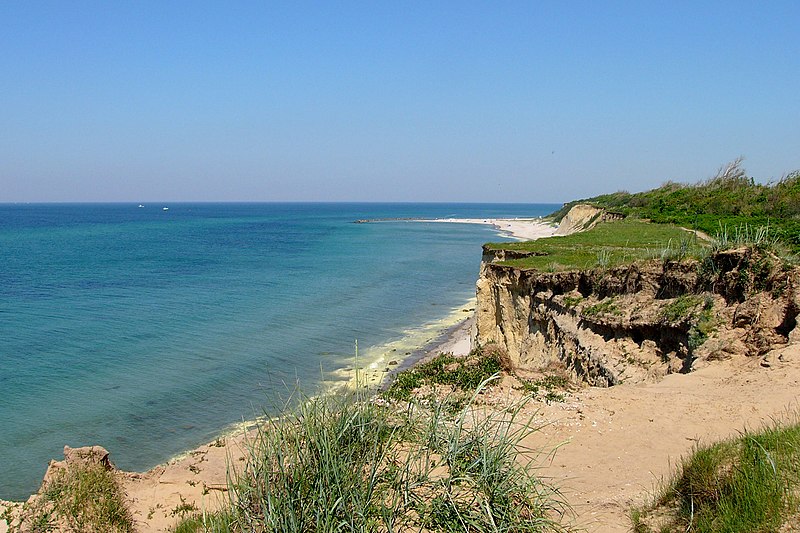
Idstein
Idstein is a town of about 25,000 inhabitants in the Rheingau-Taunus-Kreis in the Regierungsbezirk of Darmstadt in Hesse, Germany. Because of its well preserved historical Altstadt (Old Town) it is part of the Deutsche Fachwerkstraße (German Timber-Frame Road), connecting towns with fine fachwerk buildings and houses.[3] In 2002, the town hosted the 42nd Hessentag state festival.
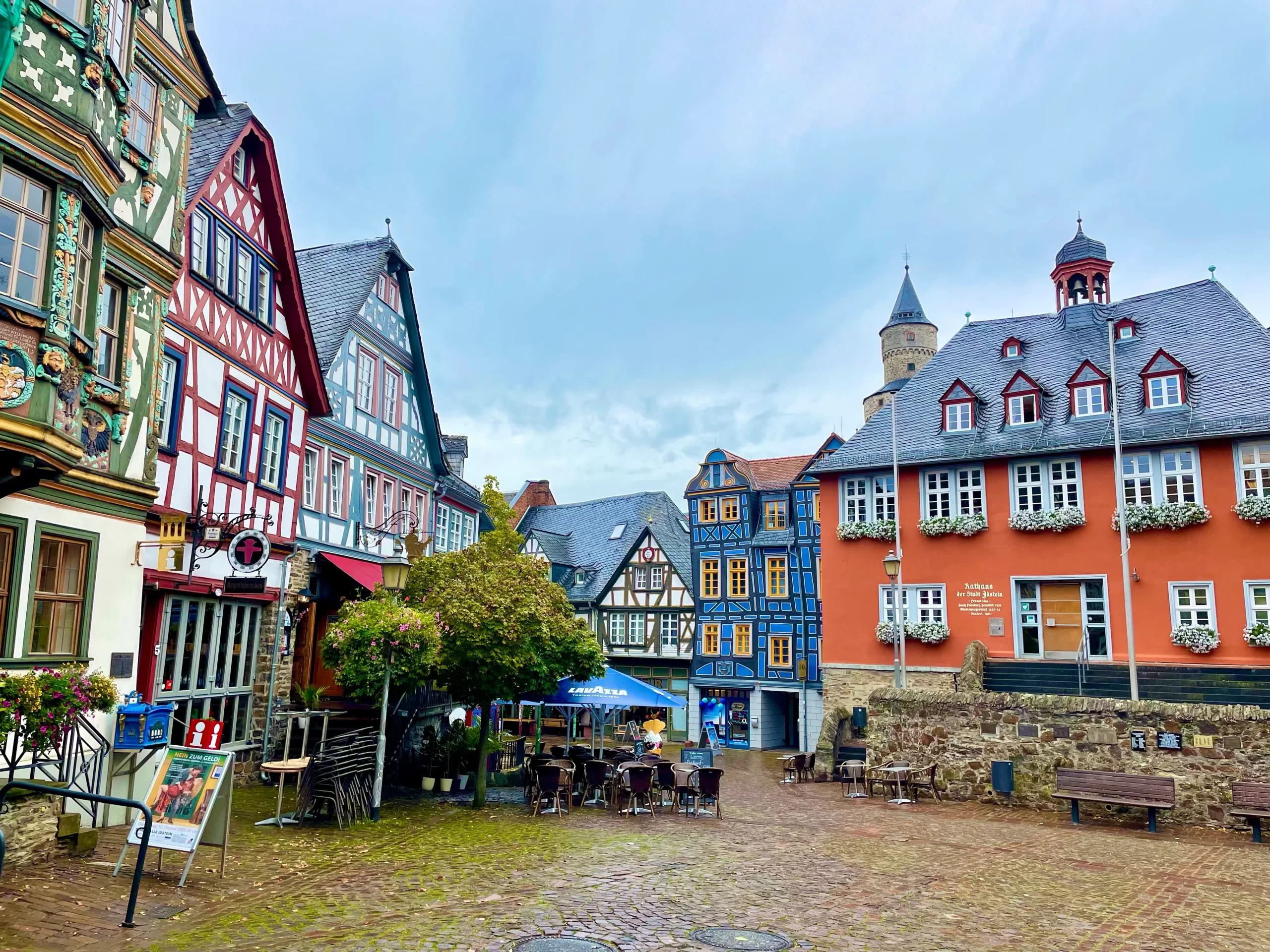
Monschau
Monschau is a small resort town in the Eifel region of western Germany, located in the Aachen district of North Rhine-Westphalia. The town is located in the hills of the North Eifel, within the Hohes Venn – Eifel Nature Park in the narrow valley of the Rur river. The historic town center has many preserved half-timbered houses and narrow streets have remained nearly unchanged for 300 years, making the town a popular tourist attraction nowadays. An open-air, classical music festival is staged annually at Burg Monschau. Historically, the main industry of the town was cloth-mills.
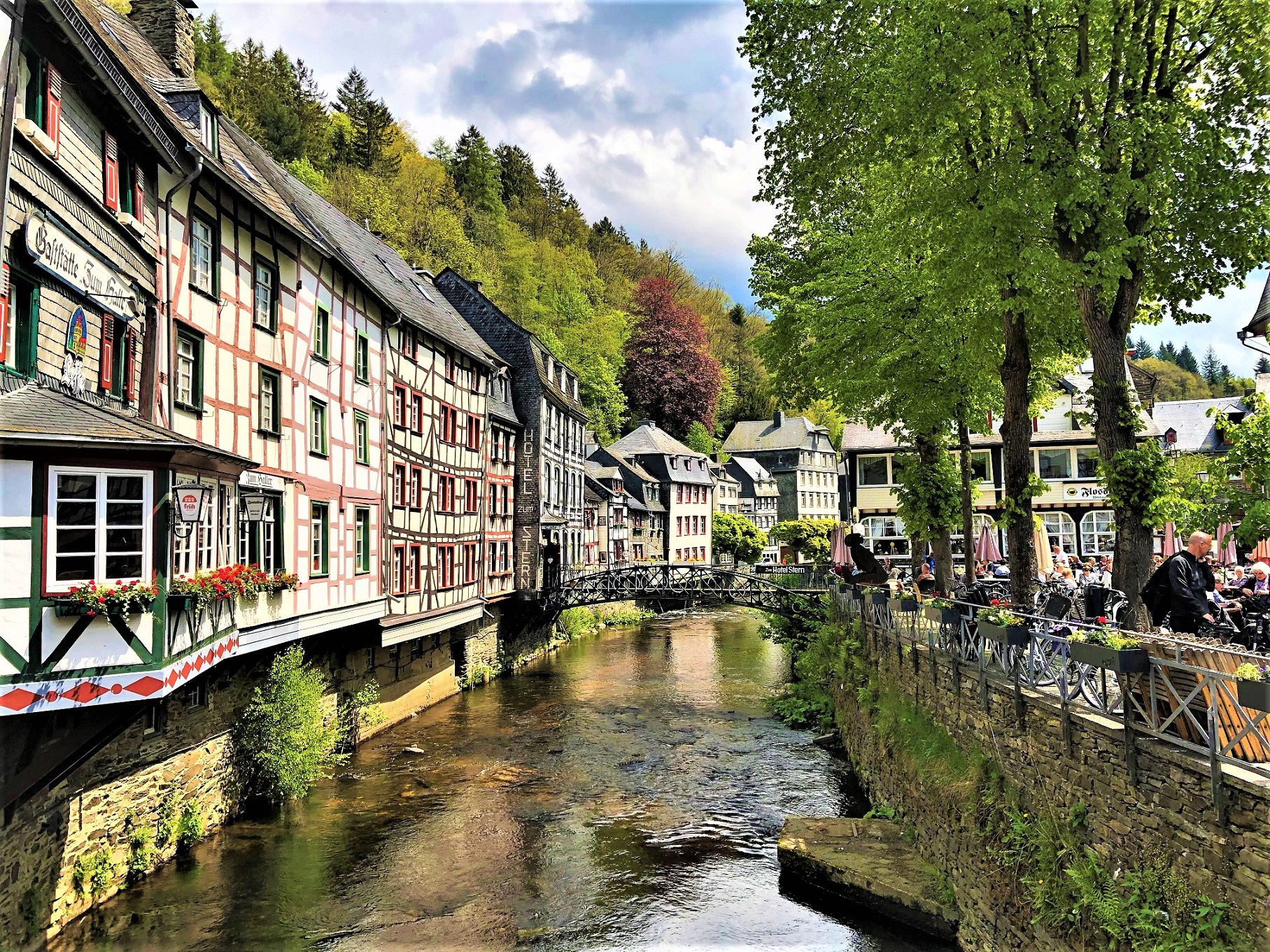
Miltenberg
Miltenberg is a town in the Regierungsbezirk of Lower Franconia (Unterfranken) in Bavaria, Germany. It is the seat of the like-named district and has a population of over 9,000. The old town lies on the Main’s left bank on the “left knee” of the Mainviereck (“Main Square”) between the Spessart and Odenwald ranges. Since the Main riverbed in the Miltenberg area is relatively near the foot of the Odenwald, only a narrow strip of usable land is left, little over 150 meters in width,[3]: 79 which in past centuries was time and again flooded by the Main. The historic centre, which stands on this land, often sustained considerable damage in these floods.
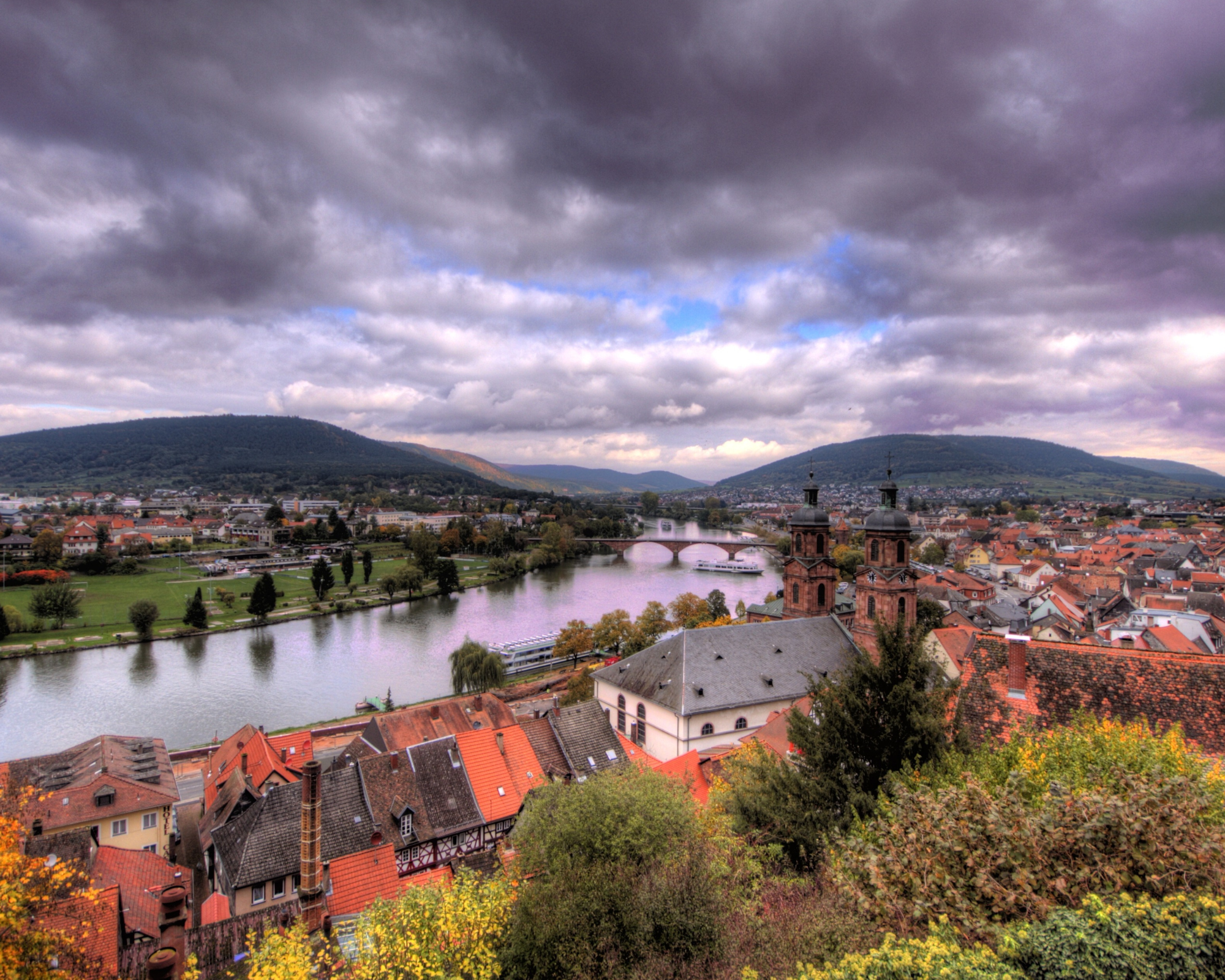
Gengenbach, Baden-Württemberg
Gengenbach is a town in the district of Ortenau, Baden-Württemberg, Germany, and a popular tourist destination on the western edge of the Black Forest, with about 11,000 inhabitants. Gengenbach also boasts a picturesque, traditional, medieval town centre (“Altstadt”). The traditional town Gengenbach is the proud owner of the world’s biggest advent calendar. The 24 windows of the 18th century town hall represent the 24 “windows” of an Advent calendar. The town also hosts a department of The Graduate School of Offenburg University of Applied Sciences, part of the University of Applied Sciences Offenburg. The nearest cities in the region are Offenburg, Freiburg, Karlsruhe, Baden-Baden and Strasbourg/France.
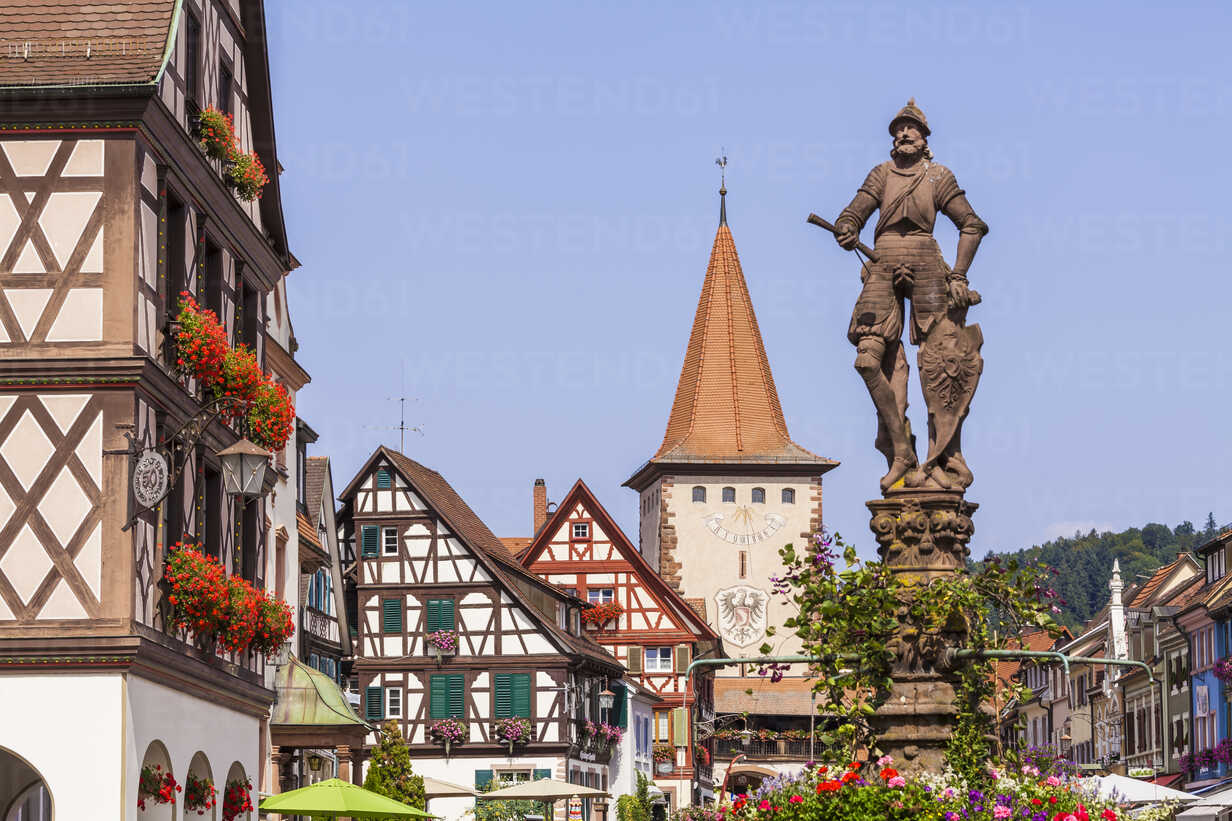
Coburg, Bavaria
Coburg is a town located on the Itz river in the Upper Franconia region of Bavaria, Germany. Long part of one of the Thuringian states of the Wettin line, it joined Bavaria by popular vote only in 1920. Until the revolution of 1918, it was one of the capitals of the Duchy of Saxe-Coburg and Gotha and the Duchy of Saxe-Coburg-Saalfeld. Through successful dynastic policies, the ruling princely family married into several of the royal families of Europe, most notably in the person of Prince Albert, who married Queen Victoria in 1840. As a result of these close links with the royal houses of Europe in the late 19th and early 20th centuries, Coburg was frequently visited by the crowned heads of Europe and their families.
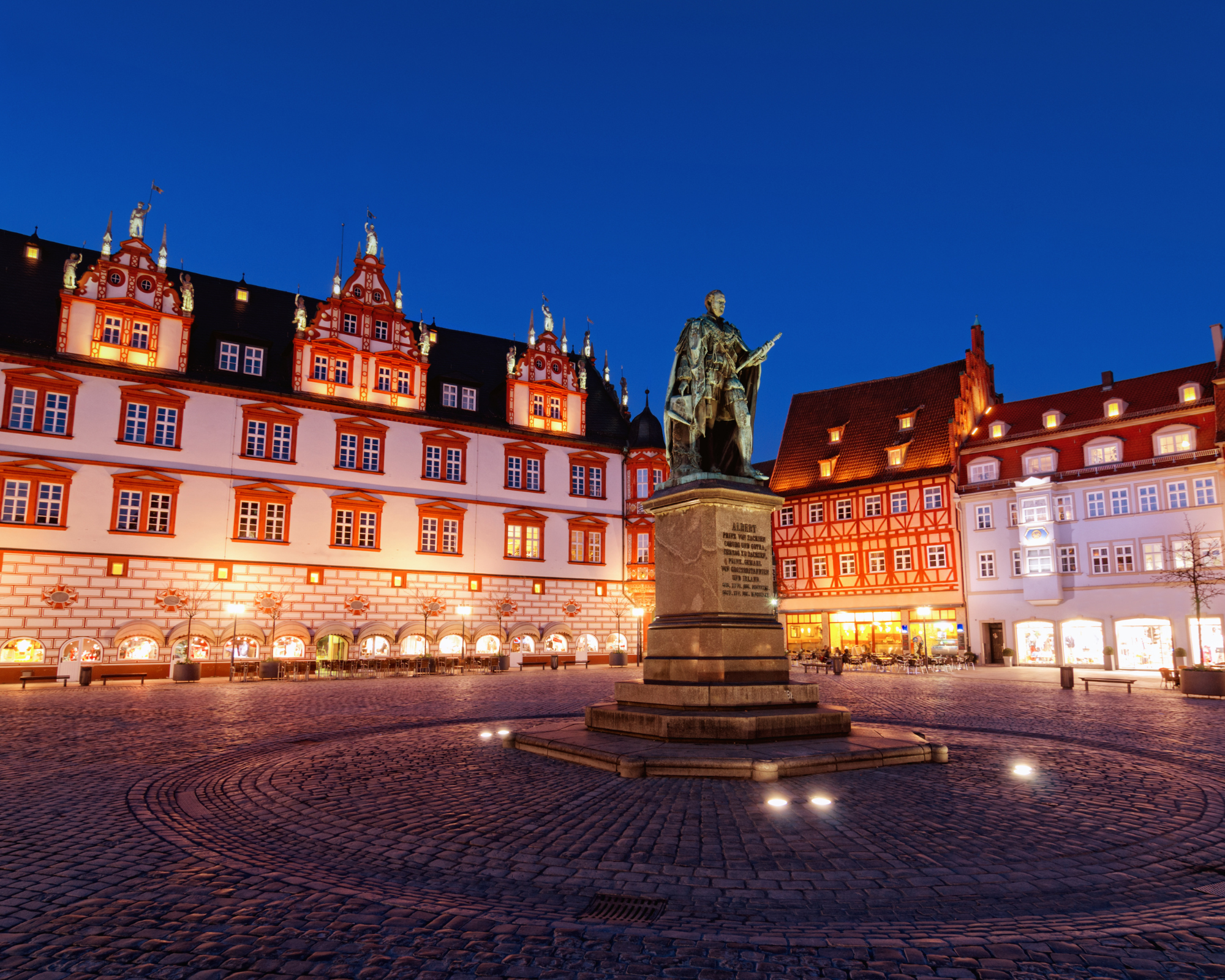
Dinkelsbühl
Dinkelsbühl is a historic town in Central Franconia, a region of Germany that is now part of the state of Bavaria, in southern Germany. Dinkelsbühl is a former free imperial city of the Holy Roman Empire. In local government terms, Dinkelsbühl lies near the western edge of the Landkreis (or local government district) of Ansbach, north of Aalen. Dinkelsbühl lies on the northern part of the Romantic Road, and is one of three particularly striking historic towns on the northern part of the route, the others being Rothenburg ob der Tauber and Nördlingen. The town lies on the southern edge of the Franconian Heights and on the River Wörnitz, which rises in the town of Schillingsfürst. The population in 2013 was 11,315.
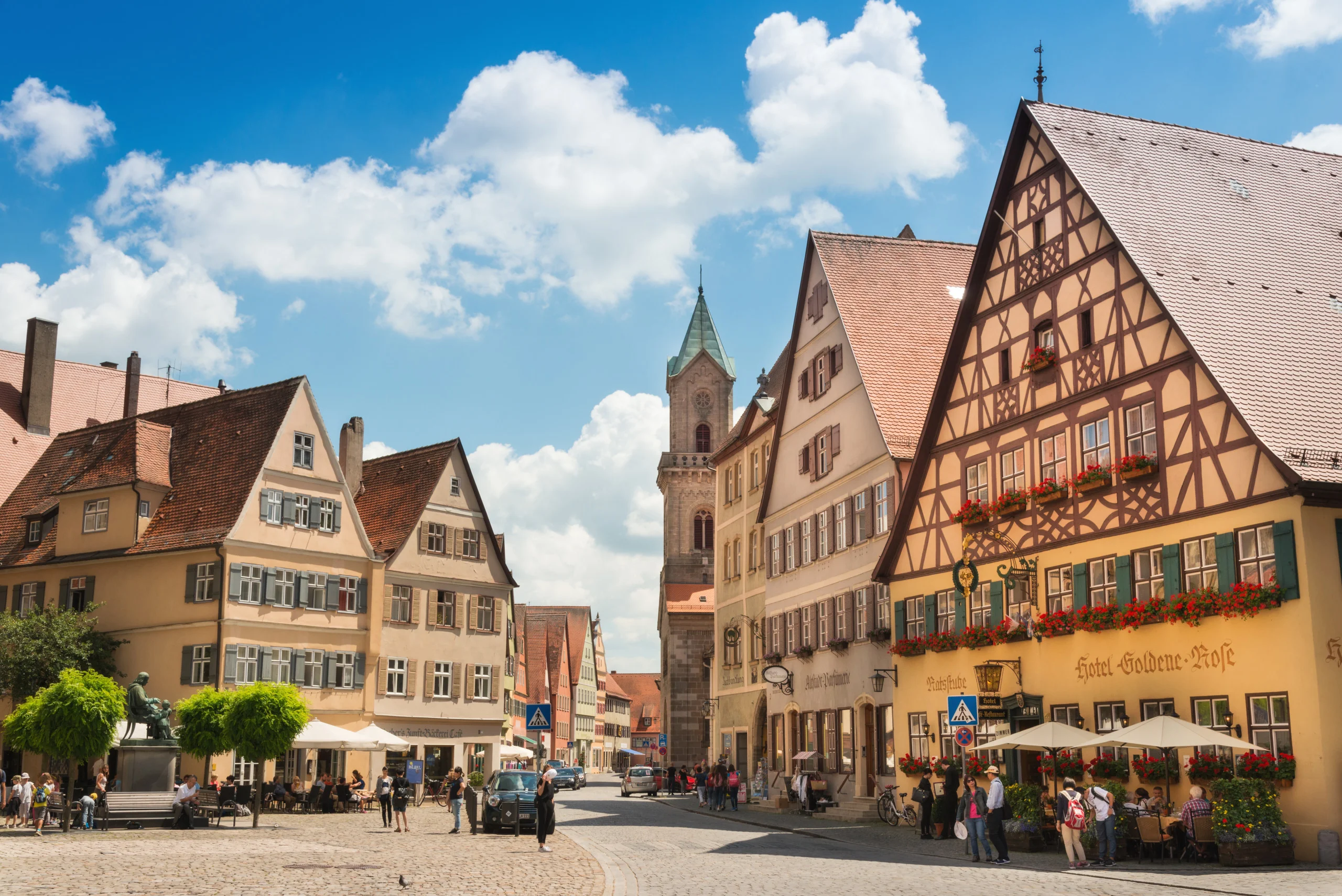
Marburg, Hesse
Marburg is a university town in the German federal state (Bundesland) of Hesse, capital of the Marburg-Biedenkopf district (Landkreis). The town area spreads along the valley of the river Lahn and has a population of approximately 76,000. Having been awarded town privileges in 1222, Marburg served as capital of the landgraviate of Hessen-Marburg during periods of the fifteenth to seventeenth centuries. The University of Marburg was founded in 1527 and dominates the public life in the town to this day. Marburg is a historic centre of the pharmaceutical industry in Germany, and there is a plant in the town (by BioNTech) to produce vaccines to tackle Covid-19.
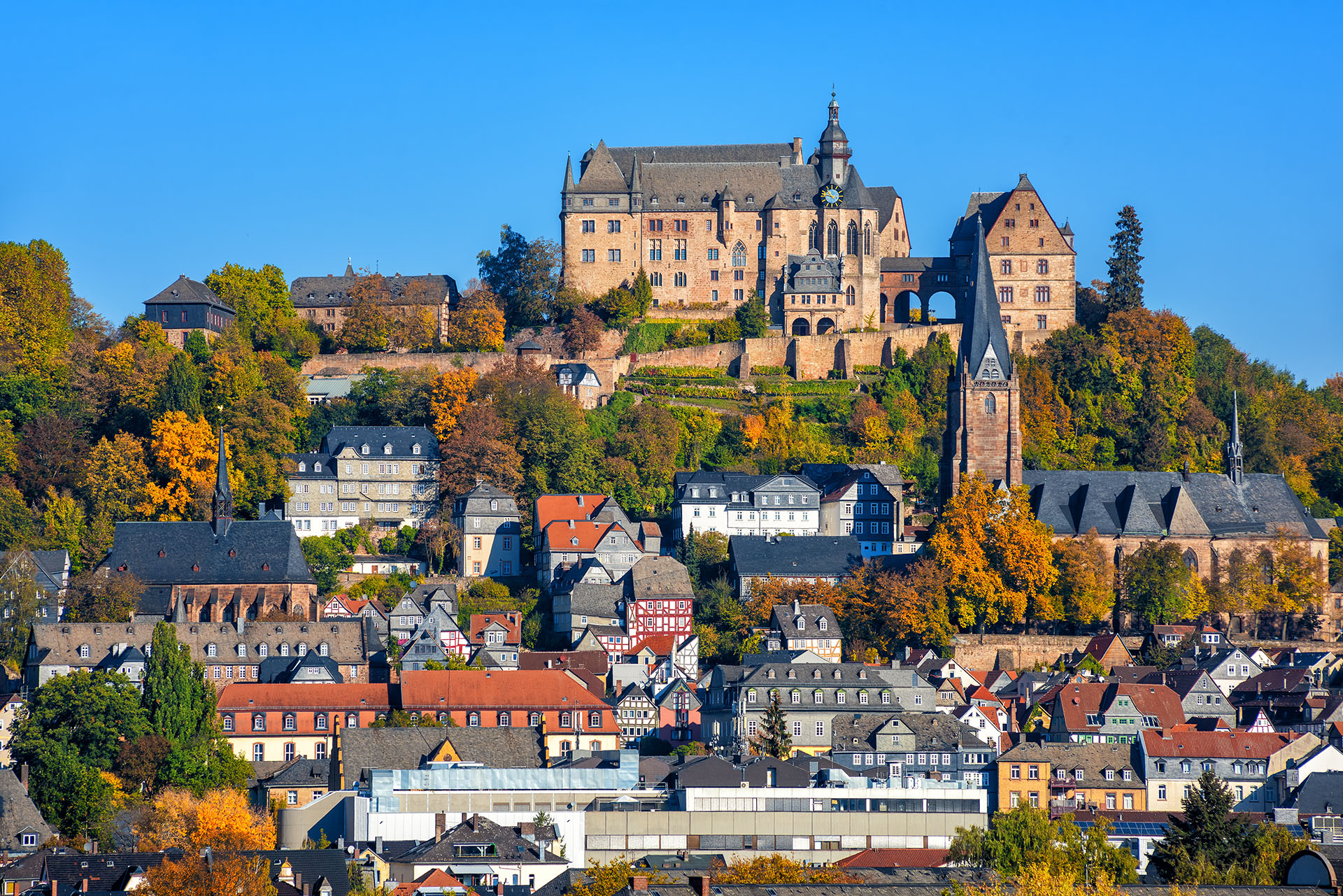
Wertheim am Main
Wertheim is a town in southwestern Germany, in the state of Baden-Württemberg with a population of around 23,400. It is located on the confluence of the rivers Tauber and Main. Wertheim is best known for its landmark castle and medieval town centre.
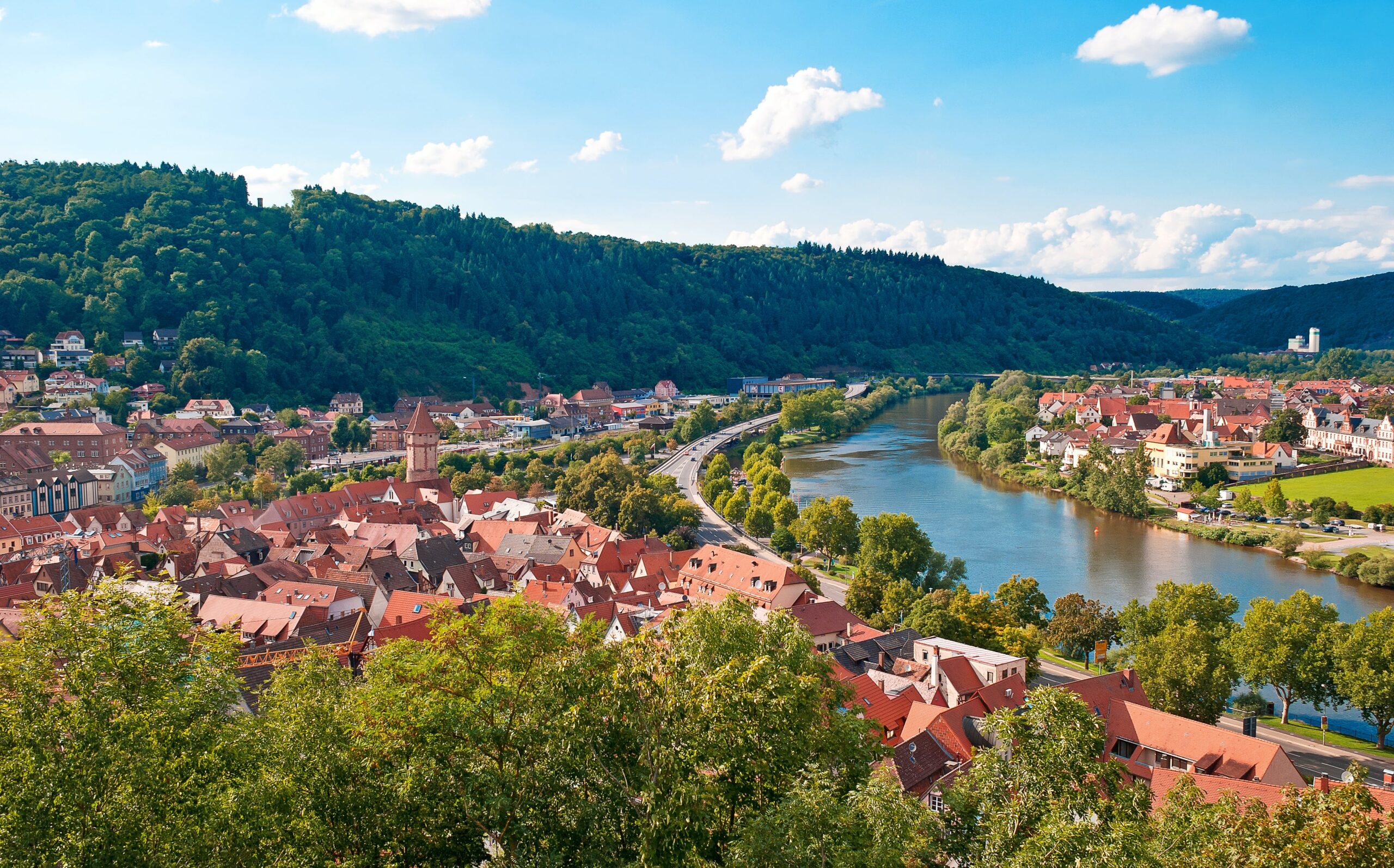
Schiltach, Baden-Württemberg
Schiltach is a town in the district of Rottweil, in Baden-Württemberg, Germany. It is situated in the eastern Black Forest, on the river Kinzig, 20 km south of Freudenstadt.Schiltach was founded in the 11th century as a parish for the surrounding farms, which are older than Schiltach. Around the town church, which today stands in the town district Vorstädtle and is evangelic, rose a settlement named after the River Schiltach. The Dukes of Teck probably founded the town of Schiltach in the middle of the 13th century to secure their territories. They built a surrounding town wall with gates and a castle above the town. They did not build a church because Schiltach already had one.
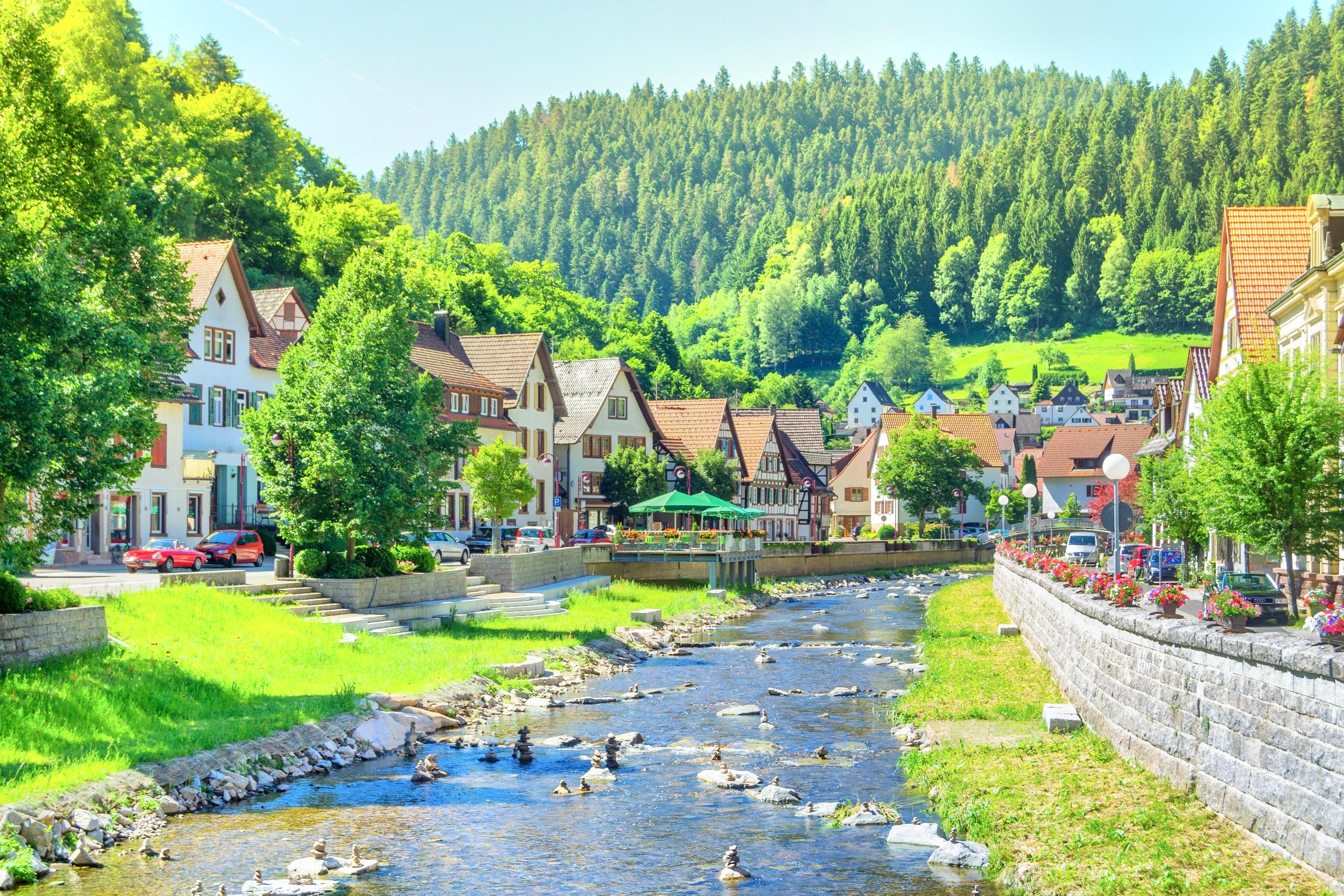
Where to stay
A good night’s sleep is particularly important when you are travelling. Germany offers its guests a host of luxurious, charming and also out-of-the-ordinary accommodation.
Whether in the heart of the city, near the lake or surrounded by nature – Germany’s hotels, B&Bs and guesthouses guarantee a relaxing and invigorating stay.
We managed to find the best three companies that offer hotels, holiday homes and transportation. These are: Booking.com, Trip.com and Vrbo. We have already tested these companies and we warmly recommend them. As a result this will just bring you good deals for your next vacation in Germany.

Luxury hotels we recommend in Germany: Hotel Adlon Kempinski Berlin, King’s Hotel Center Superior, Steigenberger Icon Frankfurter Hof.
Mid-range hotels we recommend in Germany: Andaz Munich Schwabinger Tor , Mercure Hotel MOA Berlin, INNSiDE by Meliá Frankfurt Ostend .
Budget hotels we recommend in Germany: ibis budget Muenchen City Olympiapark, Sunflower Hostel Berlin, ibis budget Frankfurt City Ost.
Where to eat
Traditional Food and
Desserts to try in Germany
Wurst- There are an estimated 1,500 varieties of sausage in Germany. These are prepared in many different ways and include a range of ingredients and unique spice blends.
Rouladen – This typical German dish consists of bacon, onions, mustard, and pickles wrapped in thinly sliced beef or veal which is then cooked.
Spätzle is especially popular in the south of the country. These soft egg noodles are made from wheat flour and egg and are often topped with cheese (Käsespätzle) and roasted onions.
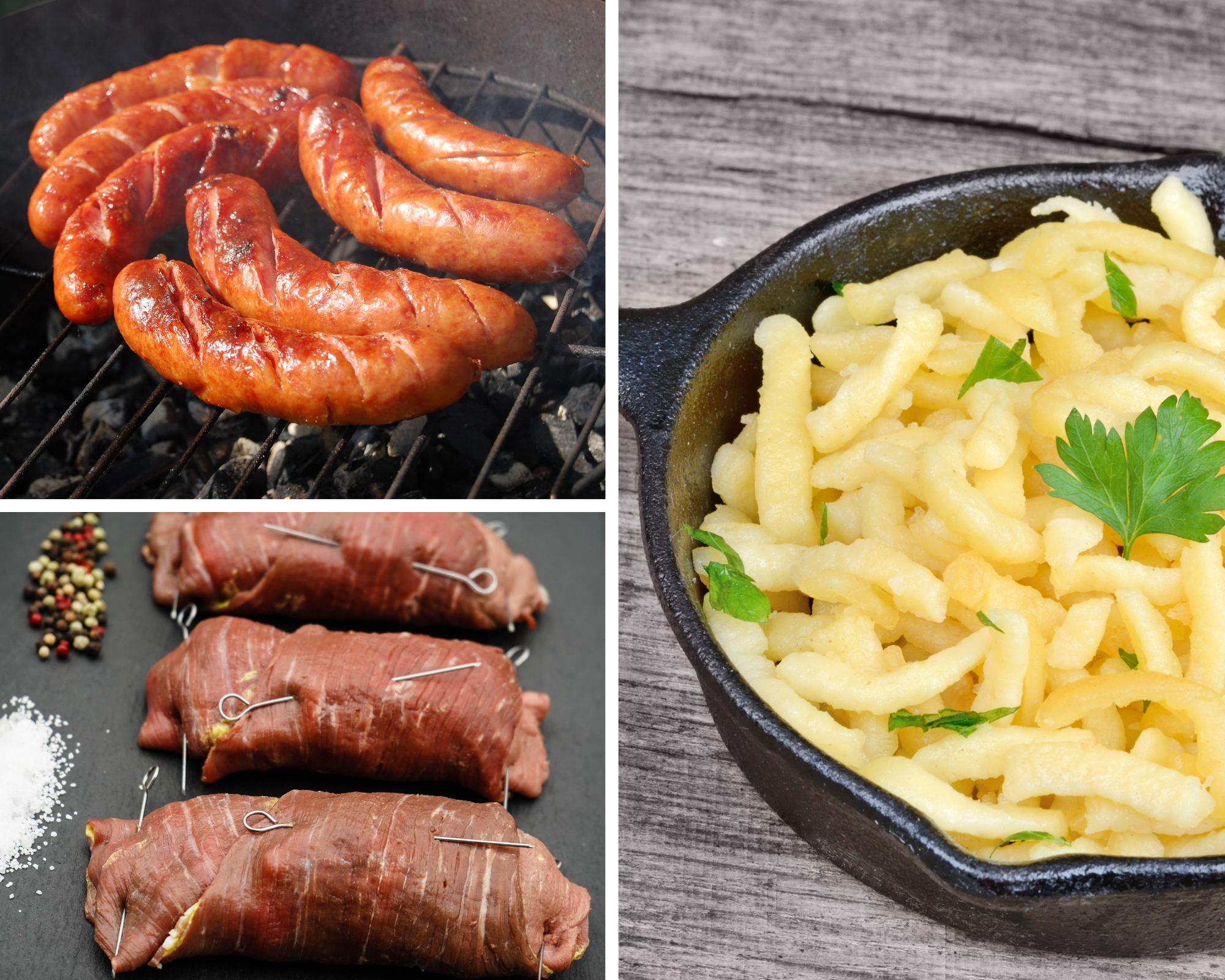
Eintopf – means ‘one pot’ and refers to the way of cooking rather than its contents. That said, most recipes contain the same basic ingredients: broth, vegetables, potatoes or pulses, and pork, beef, chicken, or fish.
Sauerbraten (meaning ‘sour’ or ‘pickled’ roast) is one of the country’s national dishes. You can make a pot roast by using many different types of meat, which you marinate in wine, vinegar, spices, herbs, and then season for up to ten days.
Kartoffelpuffer are shallow pan-fried pancakes made from grated or ground potatoes mixed with flour, egg, onion, and seasoning.
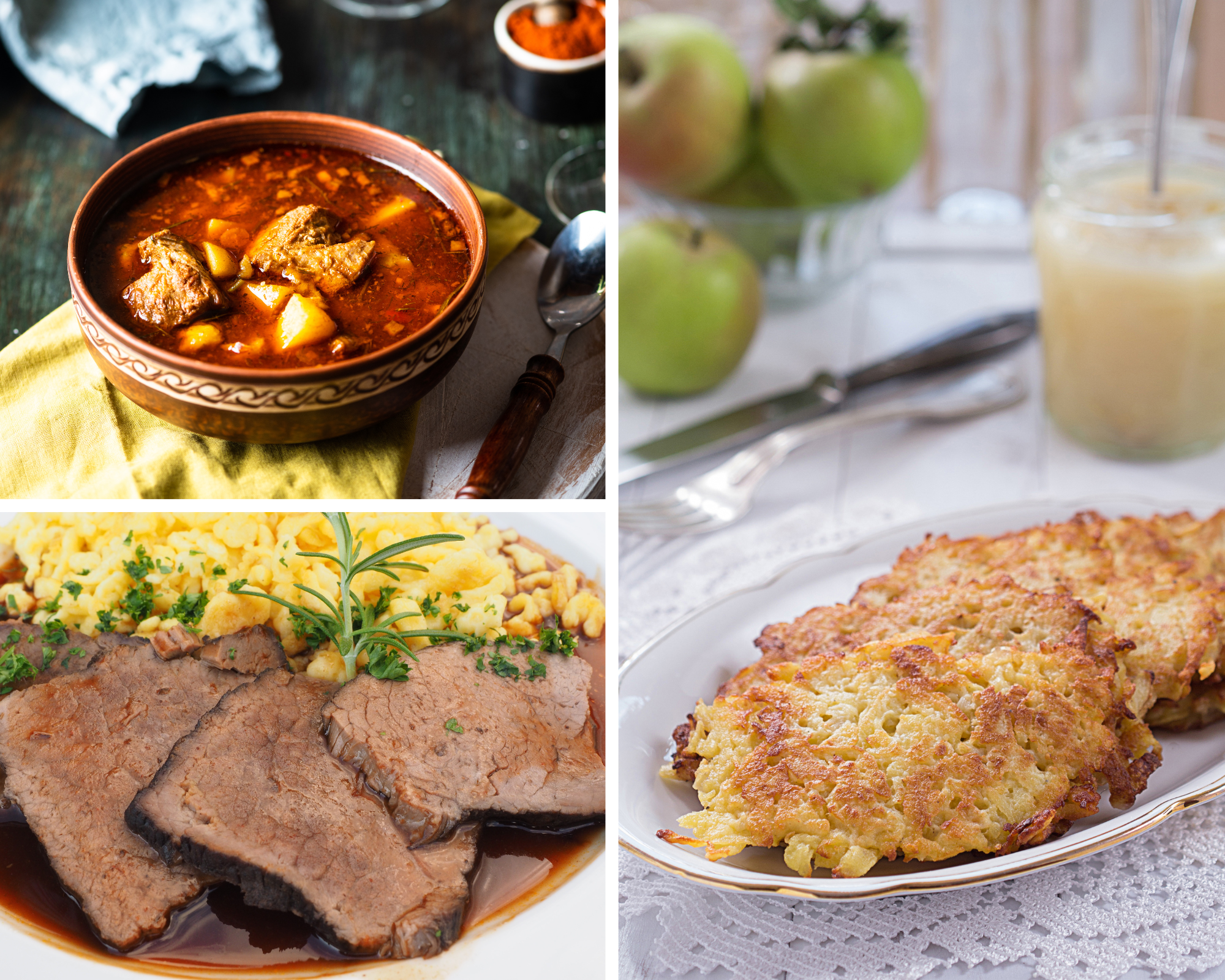
Kartofflelknödel is the German term for potato dumplings. Potatoes serve as the base for the dumplings, but you can add any spices and croutons you like.
Maultaschen are small sheets of dough filled with various ingredients. Some people like ground beef, while others add smoked meats, including sausages. You can also add onions and herbs to your dumplings.
Of course, all travel enthusiasts and everyone who loves to try new foods have heard about these foods, but these foods are specific to Germany and you must try them when you are here: pretzel, pork schnitzel, potato salad, fried potatoes, currywurst.
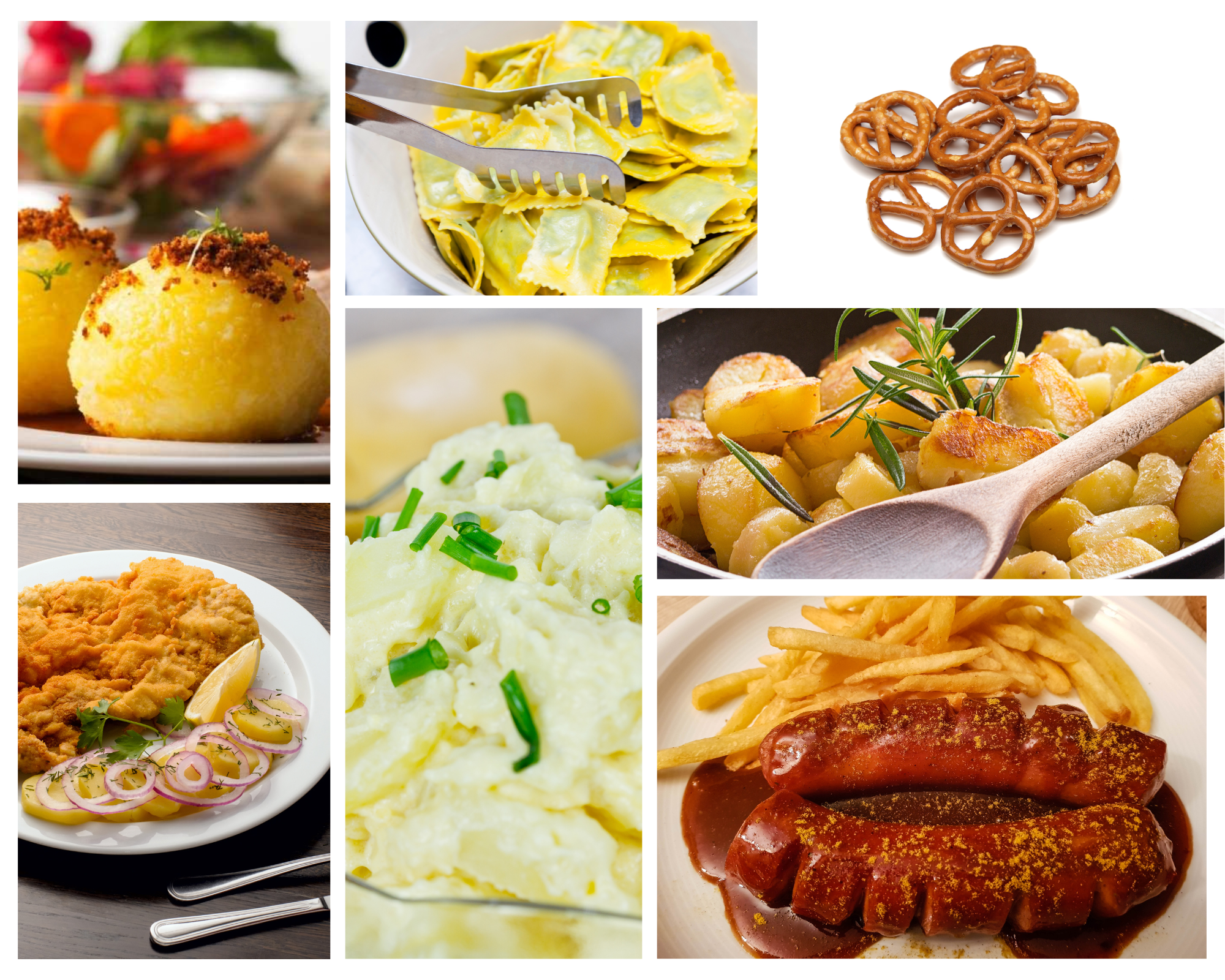
Black Forest cherry torte – Alternating layers of rich chocolate cake, cherries, and whipped cream are topped off with more cream, maraschino cherries, and chocolate shavings for a luxurious finish.
Stollen is an authentic German Christmas food. It dates back to the 16th century, and it is most popular in Dresden. It is a flatbread with dried and candied fruits. You can also add chopped or whole nuts and then top the bread off with powdered sugar.

Saving Tips
- CHOOSE YOUR AIRPORT WISELY: If you’re flying from North America, you’re likely to find the best flight deals into Frankfurt, home to Germany’s largest international airport. However, Frankfurt is five hours away from Berlin and almost four hours away from Munich. Since train tickets can be pricey and gas is expensive, it may be worth paying a little extra to fly closer to your destination.
- TRY A LOW-COST AIRLINE: Consider low-cost airline options from the US to Germany, including Norwegian Airlines.
- Get city tourism cards – Most of the major cities in Germany offer city tourism cards. These include free admission to major museums and attractions, discounts on restaurants, and usually unlimited public transportation. If you plan on seeing a lot, these cards can save you money.
- Get transportation day passes – If you’re going to be using public transportation a lot in a city, get a day pass. Paying for single rides adds up quickly.
- SEASON” SAVINGS: If you can, try to visit Germany in June or September. You’ll find better deals during these months and the weather is still usually very pleasant.
- Book your train early – Trains in Germany are expensive but you can get a saver ticket that is around 40-50% off the standard fare if you book at least a week in advance.
- You can get online for free and make use of the free Wi-fi. Many cafes and renowned chains like McDonald’s and Starbucks offer free Wi-Fi in Germany, as do the various municipal buildings, libraries, parks, and some museums.
- Look out for free museum days – Most museums in Germany offer free admission on certain days or evenings.
- KEEP AN EYE ON SCHOOL HOLIDAYS: Public school in Germany has five main school holidays: winter holidays, spring break, summer holidays, autumn holidays and Christmas holidays.
- Hop-On Hop-Off bus tours or Big Bus tours
If you do not go by car and need to know more informations about the tours, things to see and do, we recommend this two companies that are offering tours for any kind of activity you want to do and where you can buy trips much cheaper than if you buy them when you arrive at your destination. It is always good to be able to save some money!
Viator and Get Your Guide : the best activities in town!
When you think about your dream vacation, you also need to plan your budget! This is why we found the perfect partner – Check24 ! We traveled with a lot of companies and they are the best if you need comfort, luxury but also fair prices! And this is very important! You can now travel and really enjoy your vacation, when you know that you can live your travel dream by paying a fair price.
Whe have even more good news! We have the best partners from around the world and you can find your dream vacation right here! We are sure that you will find everything you need – Just check our partners websites and find your dream vacation!
There’s no feeling in the world like connecting with new places, people and experiences through travel. From the iconic to the unexpected, get those “pinch me” moments through a series of Trafalgar highlights others may never know about, or have access to.
Getting Around
There are a wealth of options when it comes to avoiding driving in Germany. With an effectively nationalized railway network, crossing the country by train means buying a ticket from Deutsche Bahn. At the local level, Germany’s states manage buses, trams, metro networks, suburban trains, and ferries. Public transportation systems in Germany are safe, efficient, and fairly easy to use. As a result, some German cities are starting to shake off the stereotype of being a car-loving nation. Across the country, 30 million passengers use public transportation in Germany on an average day.
There are a wealth of options when it comes to avoiding driving in Germany. With an effectively nationalized railway network, crossing the country by train means buying a ticket from Deutsche Bahn. At the local level, Germany’s states manage buses, trams, metro networks, suburban trains, and ferries.
Modes of public transport in Germany:
S-bahn (city rapid rail), and, as the name suggests, is the fastest form of public transportation.
U-Bahn is the German version of the metro.
Tram – They travel on rails alongside regular roads and have multiple stops within city center areas.
Buses are the mainstay of many German towns and cities, linking further-afield places and operating into the night when the other forms of transport stop running (although S-Bahn and U-bahn trains typically run all night over the weekend in larger cities).
Regional trains are either RB (Regionalbahn), with multiple stops, or RE (Regionalexpress), which are faster and have fewer stops.
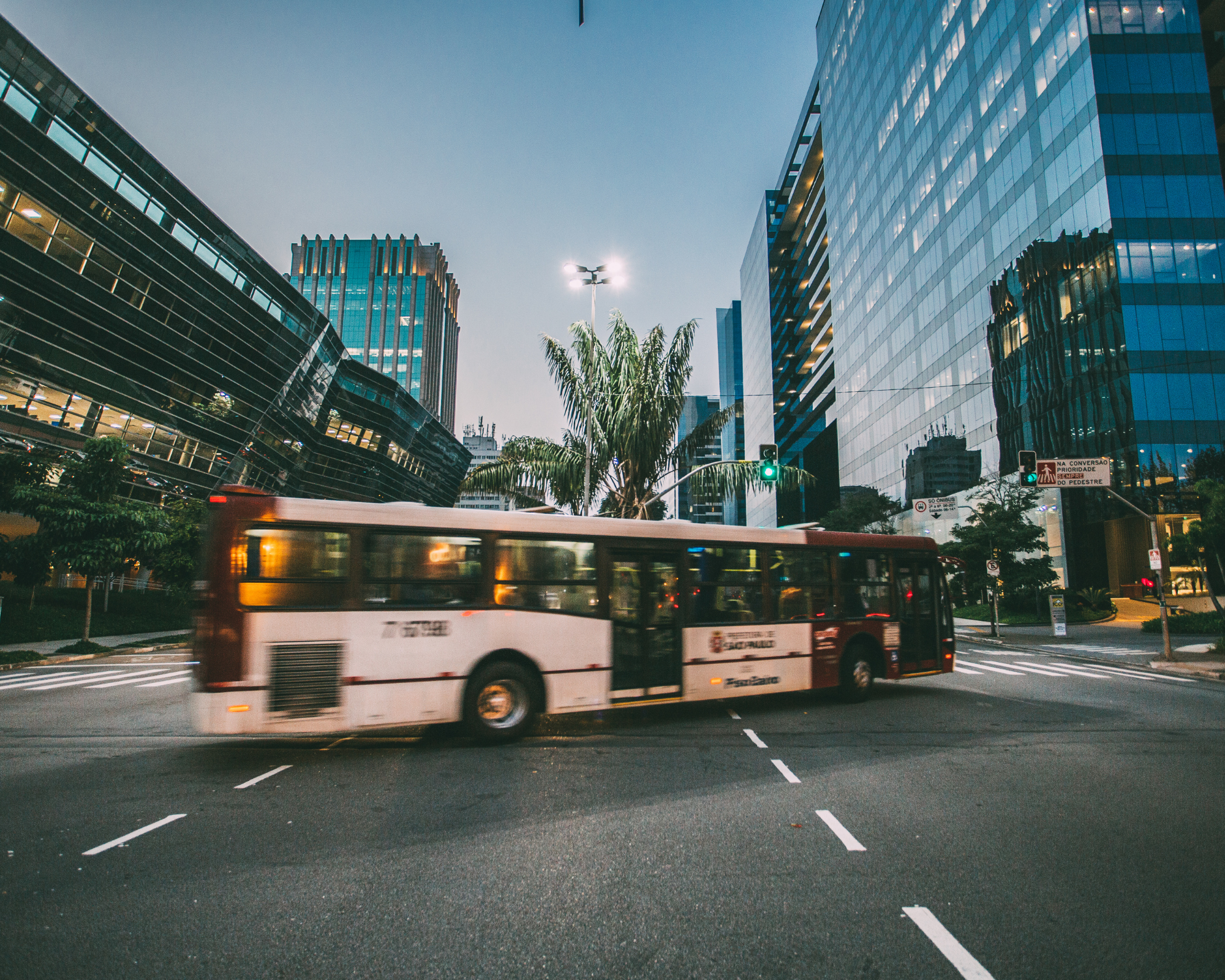
Week ticket (Wochenkarte) are valid within specified zones for a week.You can also purchase tickets that are valid for longer (e.g. a month pass) but these usually have to be purchased from an official at the ticketing office.
Group day ticket (Gruppentageskarte) While tickets in Germany generally don’t come cheap, the group day ticket actually offers great value for money if you are travelling in a group of three or more. Usually valid for groups of up to five people, they give unlimited travel for a day or 24 hours within specified zones.
If you are required to validate your ticket it will be printed with something along the lines of “Bitte entwerten” (please validate). To validate it, push your ticket into the slot of one of the validator machines (Entwerter), which you can usually find next to the ticket machines or on the station platform.

In general, there are three types of train services in Germany connecting major urban areas: Intercity-Express (ICE): high-speed trains that reach speeds up to 320km/h. ICE trains have first-class seating and a dining car. Intercity (IC): express trains. IC trains have first-class carriages and usually also have catering services of some kind. EuroCity (EC): Intercity trains with scheduled stops outside of Germany. Not all Intercity-type trains that travel outside of Germany are EC trains, however.
International trains
Germany lies right in the middle of Europe, counting nine different countries as neighbors. As a result, there are plenty of direct international trains running from German train stations. Deutsche Bahn’s high-speed service, the ICE, runs a number of international routes from countries like: Austria, Belgium, France, Netherlands, Switzerland, Czech Republic, Denmark, Italy, Poland.
Auto Europe Car Rental, provides the clients with the best rates & service in the industry! They offer travelers the best rates at 20,000 pickup locations in over 180 countries worldwide. The Auto Europe Advantage: Free Cancellation Up to 48 Hours Before Pickup, Best Rate Guarantee,24/7 Service Hotline from Pickup to Drop off. Enjoy now a 30% discount!
Getting here
There are a total of 36 international airports in Germany, ranging from smaller airfields only operating a few routes and airlines, to mega complexes such as Frankfurt and Munich that transport tens of millions of passengers per year.
In total, there are 16 international airports, 12 of which are considered major airports with over 50,000 passengers. With more than 500,000 aircraft movements and 70 million passengers per year, Frankfurt Airport is the largest in the country.
Airlines are mainly divided into the areas of passenger transport, freight transport, charter flights and ambulance services. By far the largest German airline is the formerly state-owned Lufthansa, which has been fully privatized since 1997.
Frankfurt Airport is the busiest in Germany. Munich Airport, which transported 46,3 million passengers in 2018, is the second busiest, and 24,28 million passengers puts Düsseldorf Airport into position three.
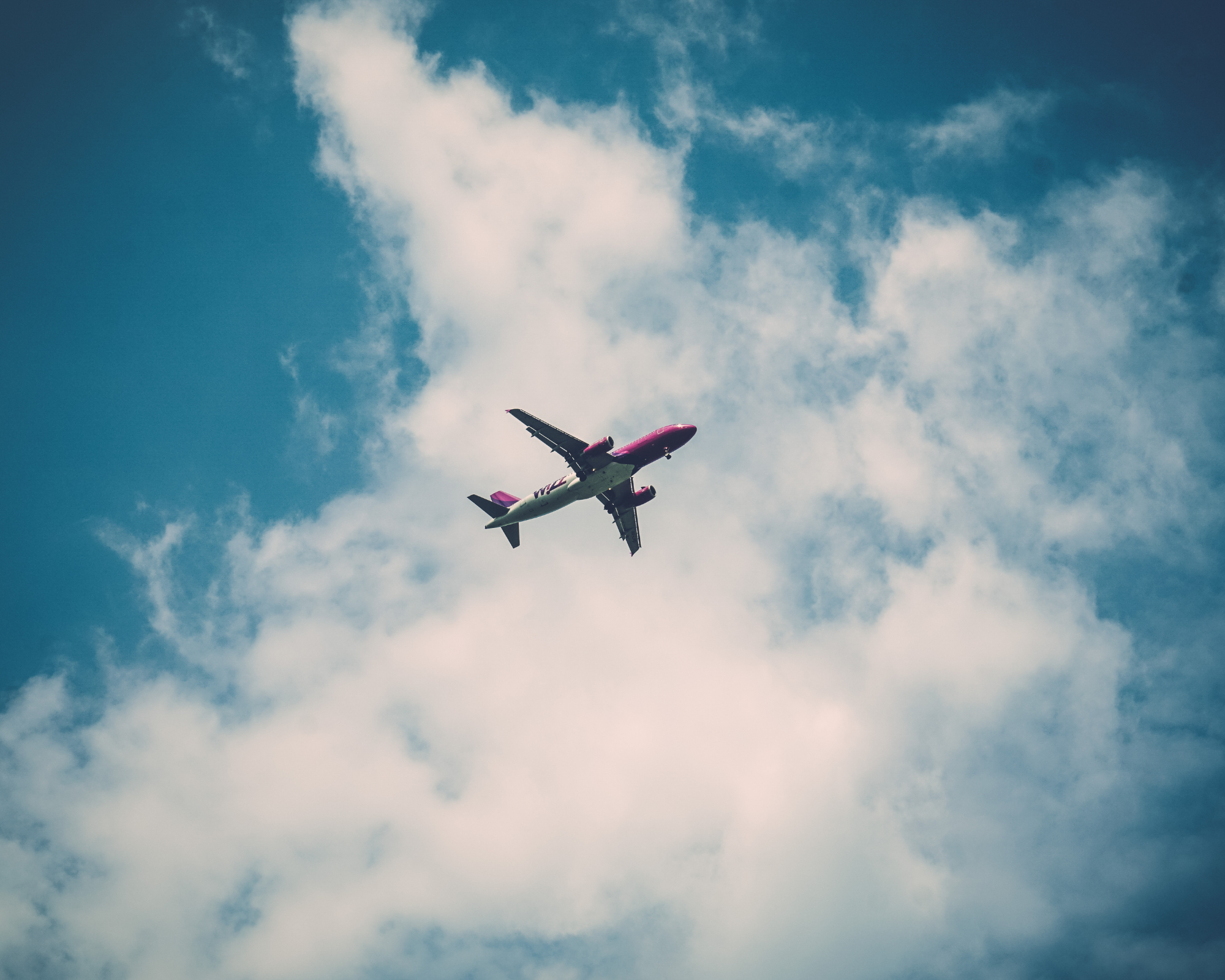
Qatar Airways is one of the biggest company in the world with unprecedented expansion, flying to over 160 destinations. Enjoy now a 30% discount by booking your flight with us!
If you have not found your desired flight, or you simply want more flight options to find the best and cheapest, we will help you with the best flight plans, where you will definitely find what you are looking for. With just one click you will find the flight to a wonderful destination!



